Chemistry and Chemists № 1 2024
Journal of Chemists-Enthusiasts
| Content | Chemistry experiments - video | Physics experiments - video | Home Page - Chemistry and Chemists |
|
Chemistry and Chemists № 1 2024 Journal of Chemists-Enthusiasts |
Vegetable oil, ethanol and water (formation of emulsion) - part 9, 10 V.M. Viter |
|
Having noticed a mistake in the text, allocate it and press Ctrl-Enter
After experiments with vegetable oils and ethyl alcohol, it would be logical to conduct similar experiments using other alcohols. I have some 1-butanol and plan experiments with it in the future, but first, I decided to experiment with glycerol (glycerin, glycerine).
Vegetable oils (as well as animal fats) consist predominantly of glycerol esters of higher fatty acids (triglycerides of fatty acids). However, the properties of glycerol can differ quite significantly from the properties of its esters. This statement is also true for other alcohols. A neighbour at the institute was developing a technology for producing biodiesel from vegetable oils and ethanol. I saw his results many years ago. Now, I vaguely remember that glycerol did not mix with vegetable oils or ethyl esters of higher fatty acids, forming a separate phase. By the way, he experimented with rapeseed and sunflower oil, not castor oil. On the other hand, I recently became convinced that castor oil and ethanol are miscible liquids. This is the difference between castor oil and sunflower oil. What will happen if you use glycerol instead of ethanol? I poured 10 ml of castor oil into a test tube and added 10 ml of glycerol. Glycerol sank to the bottom; two transparent liquid layers formed in the test tube (there was no turbidity in both liquids). Then, I mixed the liquids with a glass rod. A white emulsion was formed, and its viscosity significantly exceeded the viscosity of the original liquids - stirring required significant effort. The viscosity of the emulsion is higher than the viscosity of any of the two initial liquids. This phenomenon is well-known and studied in detail. Without going into details, we can say that a dispersed phase interferes with the free flow of a continuous phase. In our case, the mentioned phenomenon manifested itself especially clearly. Glycerol and castor oil are viscous liquids, but It turned out that their mixture has much higher viscosity. A white, thick emulsion formed in the test tube. Even trapped air bubbles had difficulty rising from it. The emulsion resembled a medical ointment. I left the emulsion to stand for 10 hours (until the morning), expecting the emulsion to collapse. My expectations were only partially met. In the morning, two layers of liquid were in the test tube. The emulsion was on the bottom, and a layer of castor oil was on top. The top layer was much thinner than the original oil layer. This meant that most of the castor oil remained in the emulsion. After 24 hours, there were no further visible changes. Several experiments immediately came to mind that could be carried out with the resulting mixture. Firstly, ethyl alcohol mixes with castor oil in any ratio. I think that ethanol should also be miscible with glycerol. So, I could add ethanol to the emulsion and stir, expecting a homogeneous solution to be formed. Secondly, high viscosity prevents the destruction of the emulsion. This means that the test tube needs to be heated in hot water to decrease the viscosity. As a result, the emulsion probably would break down. I chose the third version of the experiment because it allowed me to carry out later either of the two listed above versions using the same test tube with the sample. The idea was simple. After 24 hours of standing, most of the castor oil remained within the oil-in-glycerol emulsion; only a little of the oil separated as a compact phase. So, I could add more glycerol and stir the liquids to emulsify all the castor oil. Probably, the resulting emulsion would not collapse when standing for 10-24 hours. After this, the test tube could be heated in hot water to see what the result will be (version 2). Then cool the test tube and add ethanol (version 1). Let us continue the experiment. First, I added 5 ml of glycerol to the test tube and mixed the content. In total, the following was added to the test tube: 10 ml castor oil; 15 ml glycerol. A white viscous emulsion formed which showed no signs of breakdown after 24 hours. The contents of the test tube were visually different in height; the middle layer of the emulsion appeared more cloudy than the upper and lower layers. However, I did not notice a distinct phase boundary. I placed the test tube in boiling water and mixed the contents. The viscosity of the emulsion decreased significantly, but the destruction of the emulsion did not occur (within 10 minutes). While stirring, a drop of emulsion accidentally fell into a glass with water. This gave me the idea to repeat the experiment I carried out using a solution of castor oil in ethanol. To do this, I removed the test tube from the hot water. Then, I poured 200 ml of cold distilled water into another glass and added 1 ml of the emulsion into the water. Drops of the emulsion of castor oil in glycerol sank to the bottom. I stirred the contents of the glass, and as a result, the water turned into a white "oil-in-water" emulsion (I did not show footage of this procedure in the video since similar experiments were already in this article). After this, I added 5 ml of ethanol to the test tube containing the remaining mixture of glycerol and castor oil (our emulsion) and then mixed the liquids. I anticipated the formation of a transparent, homogeneous solution, but to my surprise, this did not occur. Instead, large yellow droplets quickly formed in the liquid and rose to the surface, where they combined into a yellow layer. A white, cloudy layer of liquid formed beneath it. There was no doubt that the upper liquid was mainly castor oil, and the lower liquid was a solution of ethyl alcohol in glycerol. After adding alcohol, further mixing of the liquids no longer led to the formation of a stable emulsion. As soon as I stopped stirring, the liquids quickly separated. Thus, the addition of ethyl alcohol led to the rapid breakdown of the "oil-in-glycerol" emulsion. After 24 hours, two layers of liquid were observed in the test tube. Below was a colourless and transparent (not cloudy) layer of a solution of ethyl alcohol in glycerol, and on top was a yellow and cloudy layer of castor oil. The turbidity indicated that the castor oil contained some dispersed particles. |

Castor oil, glycerol and ethyl alcohol |
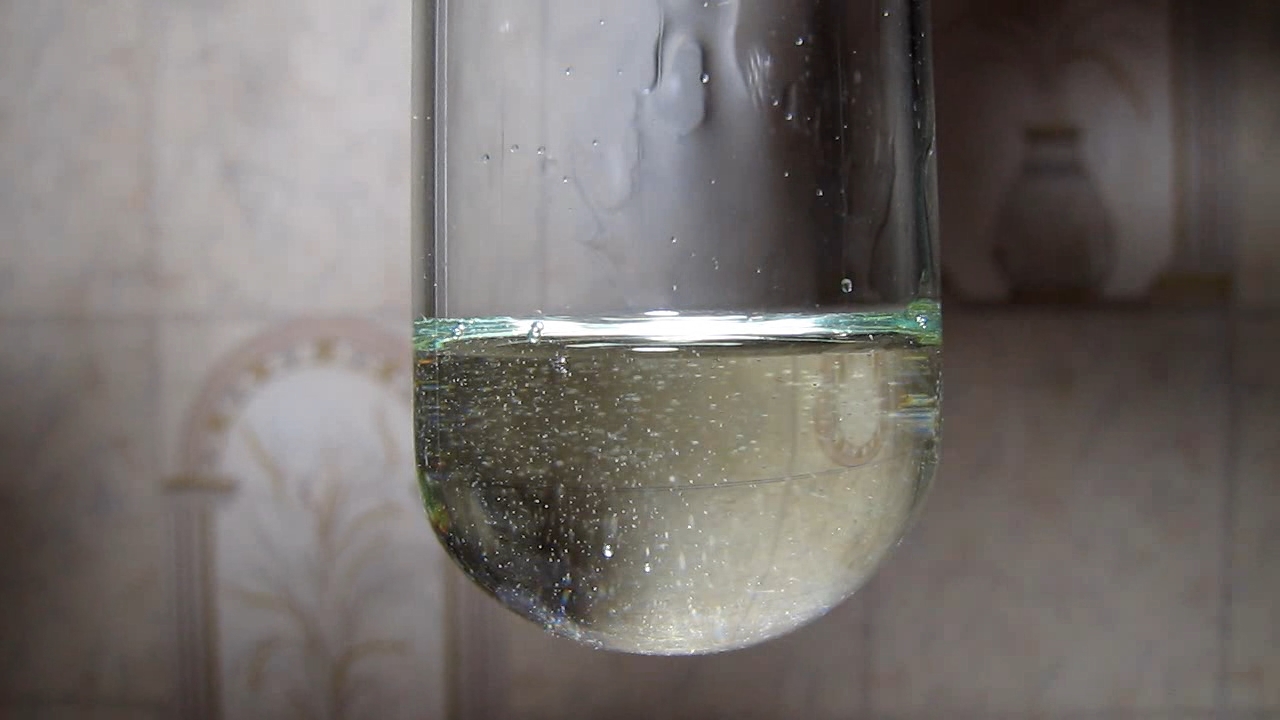
|
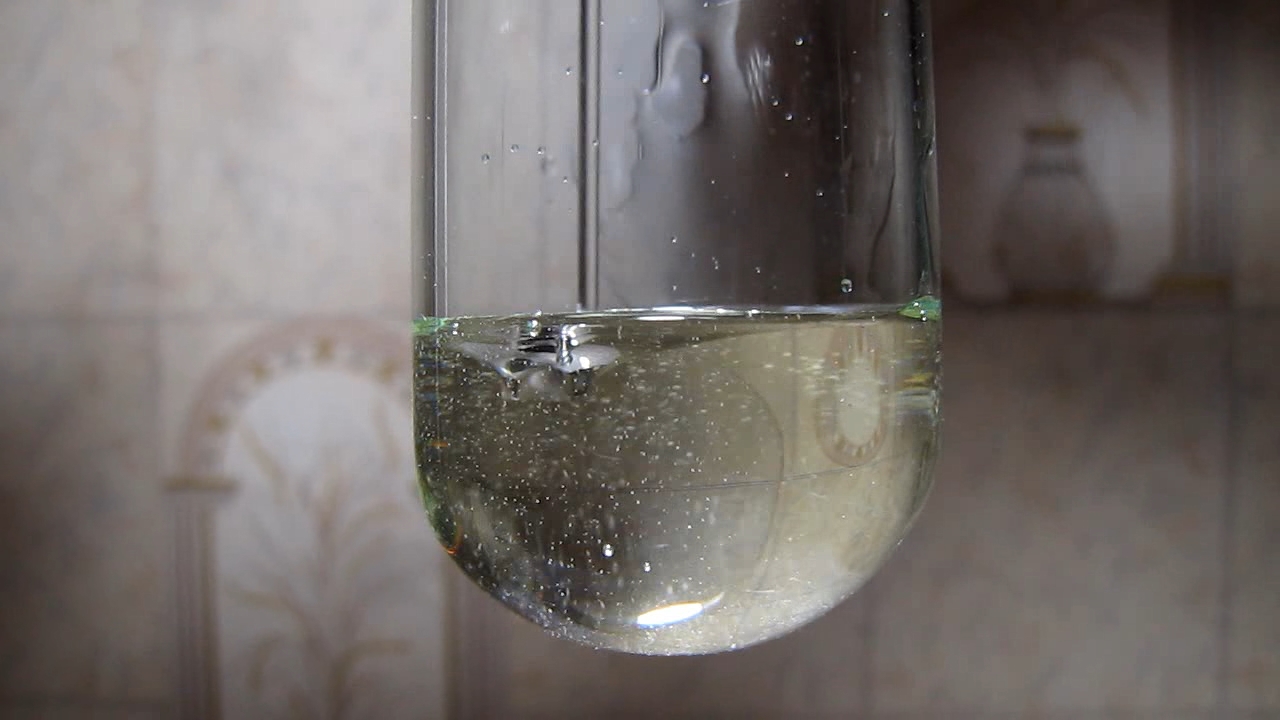
|
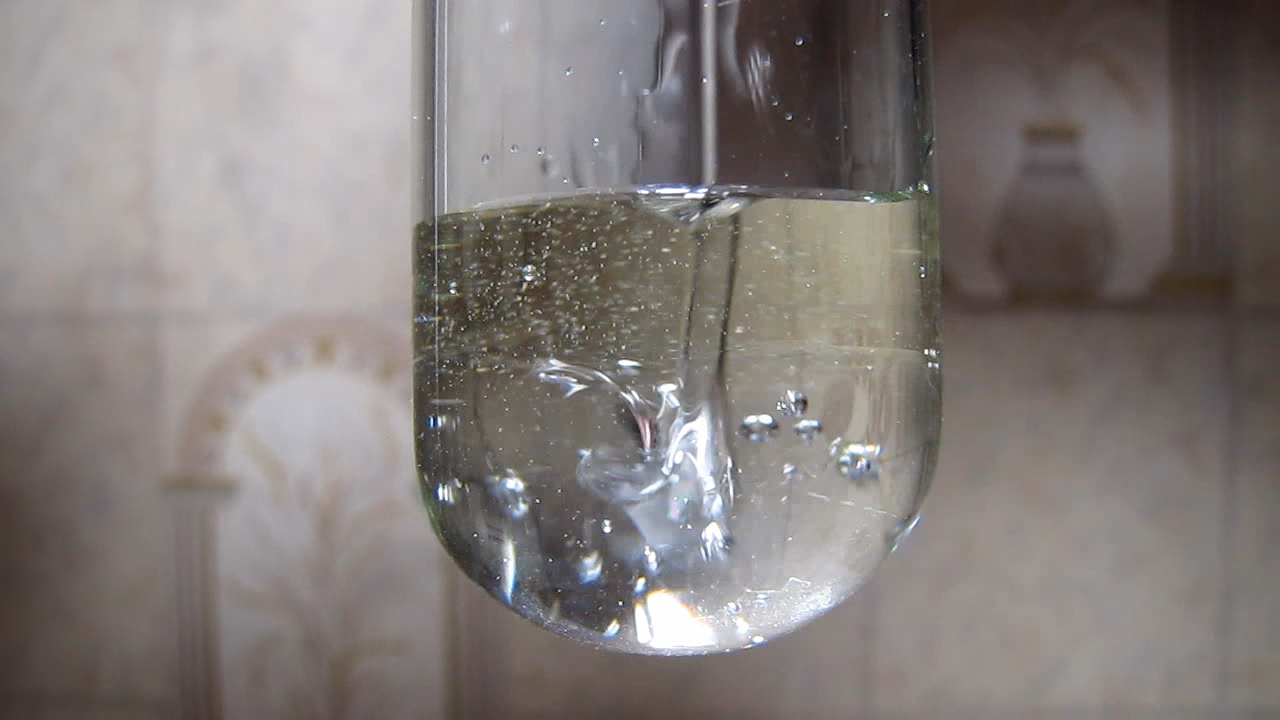
|
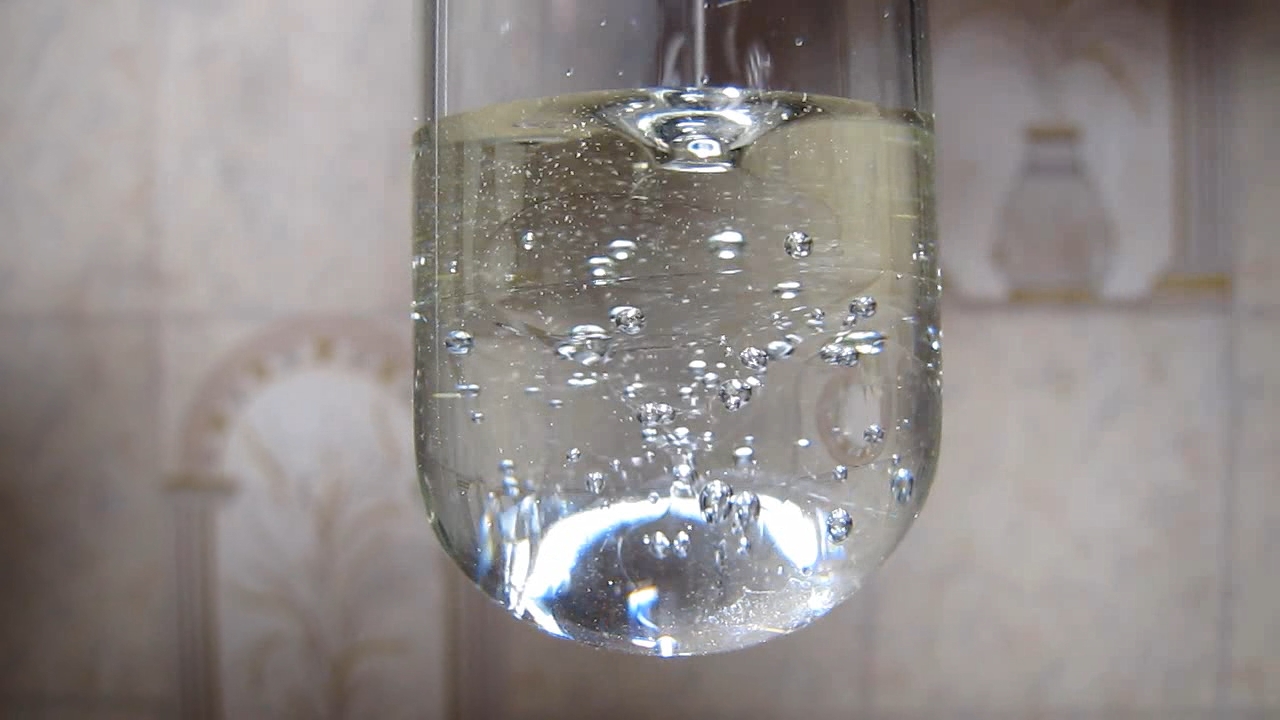
|
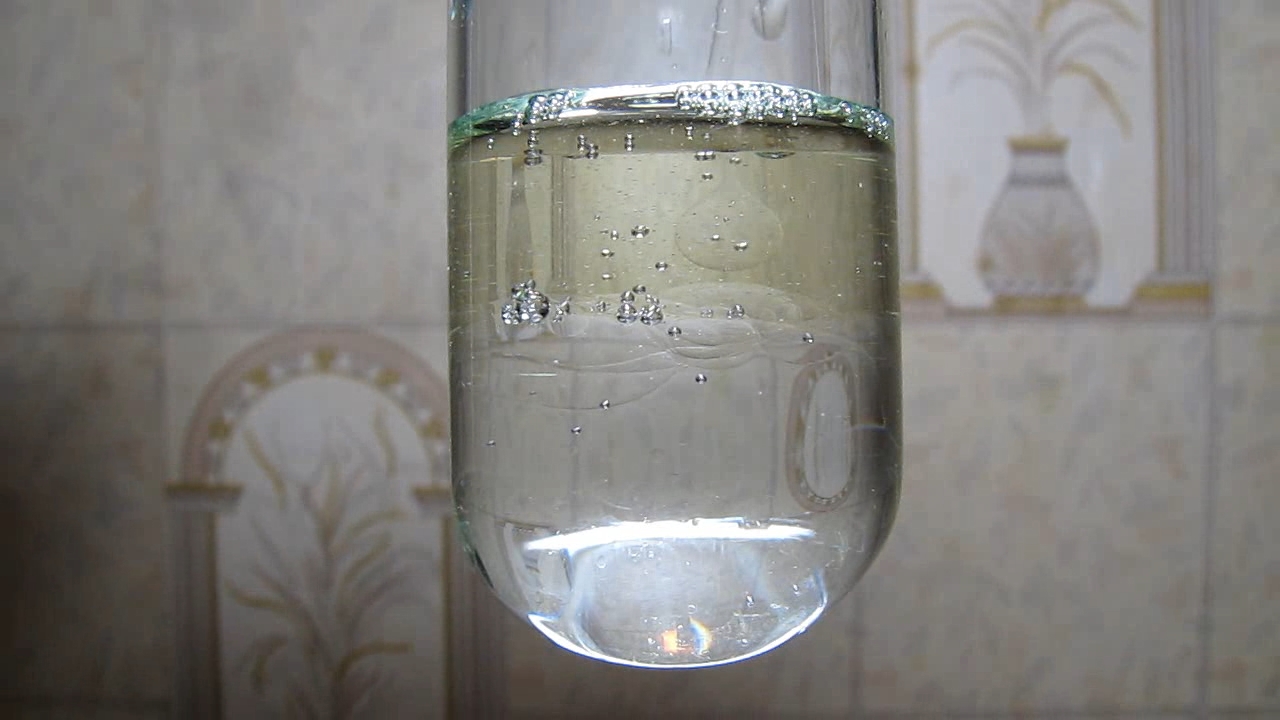
|
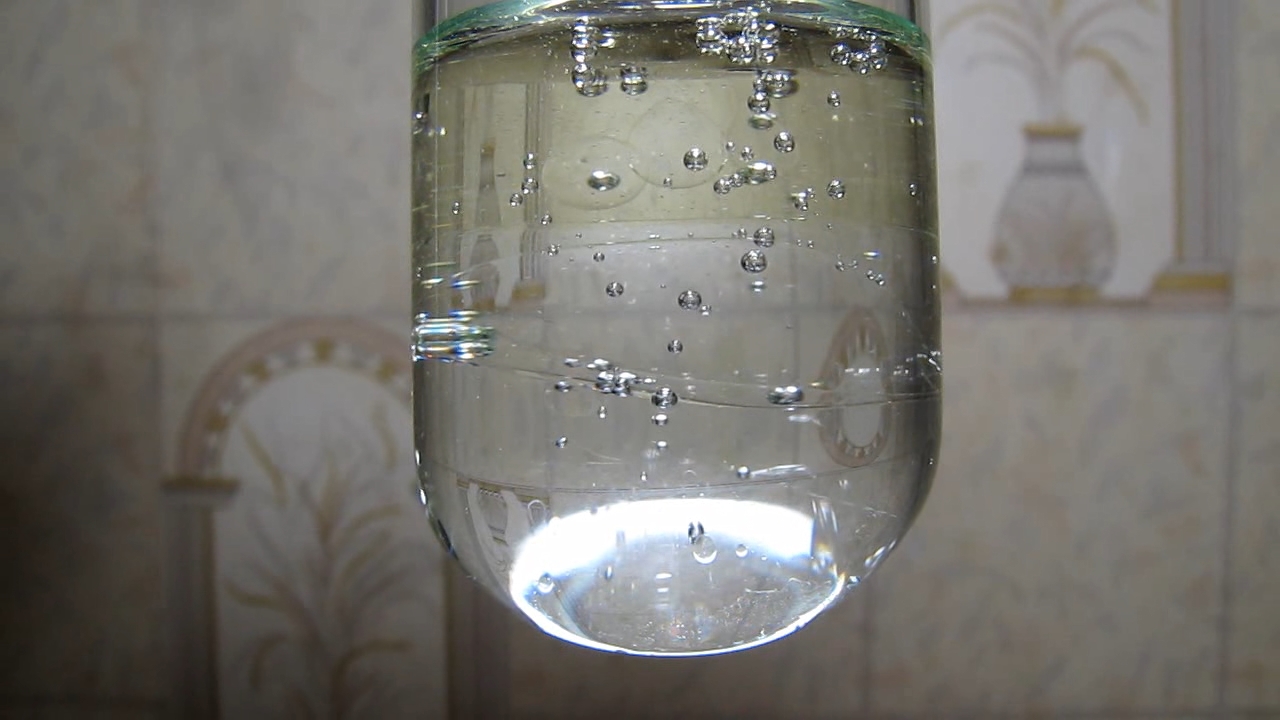
|
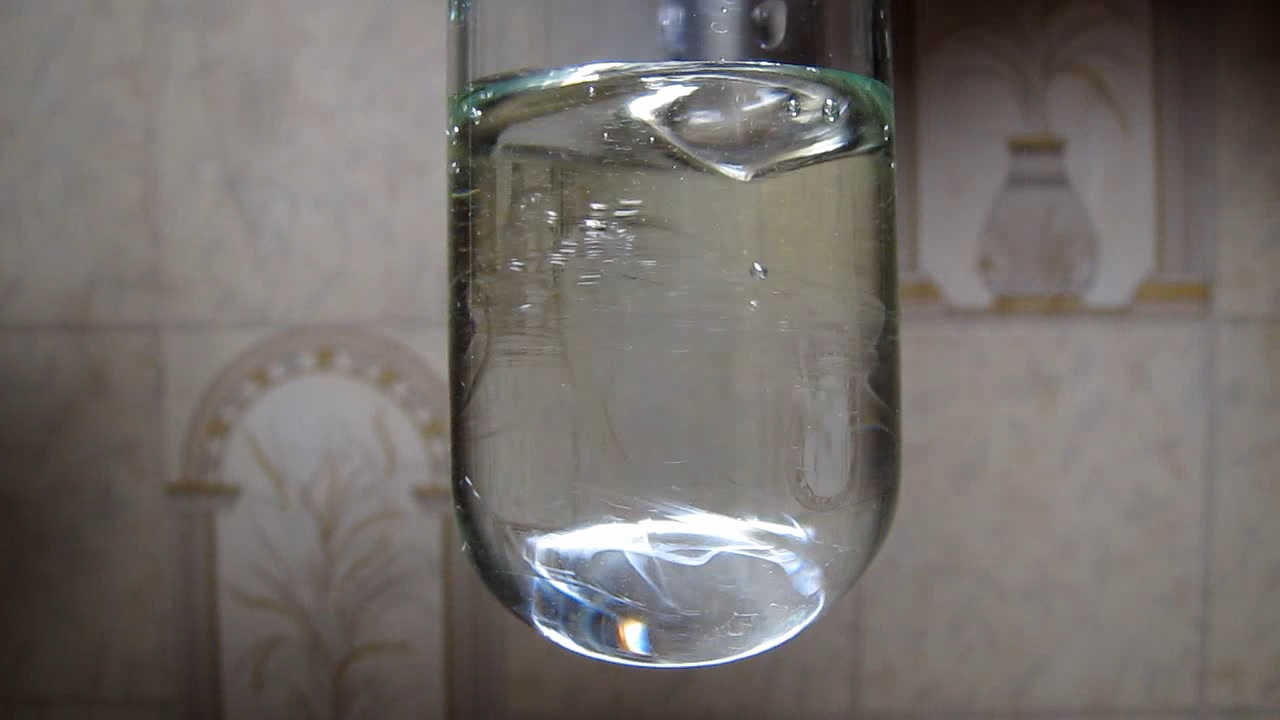
|
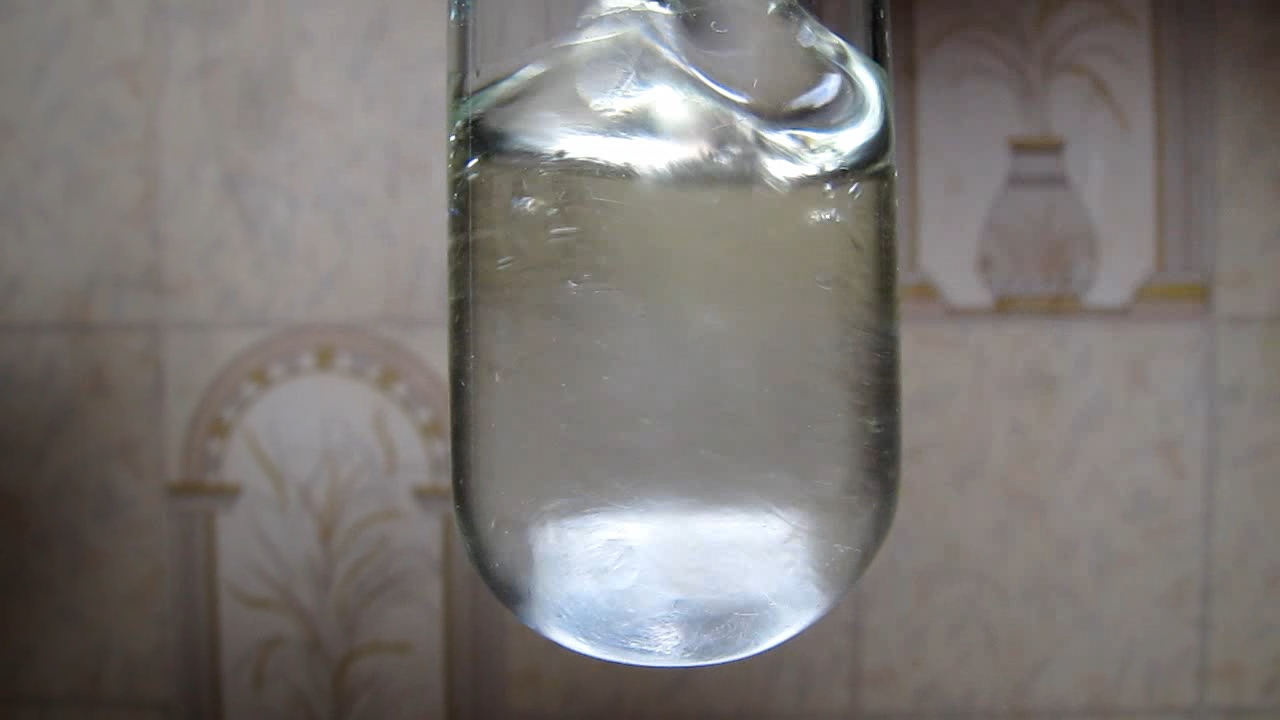
|

|
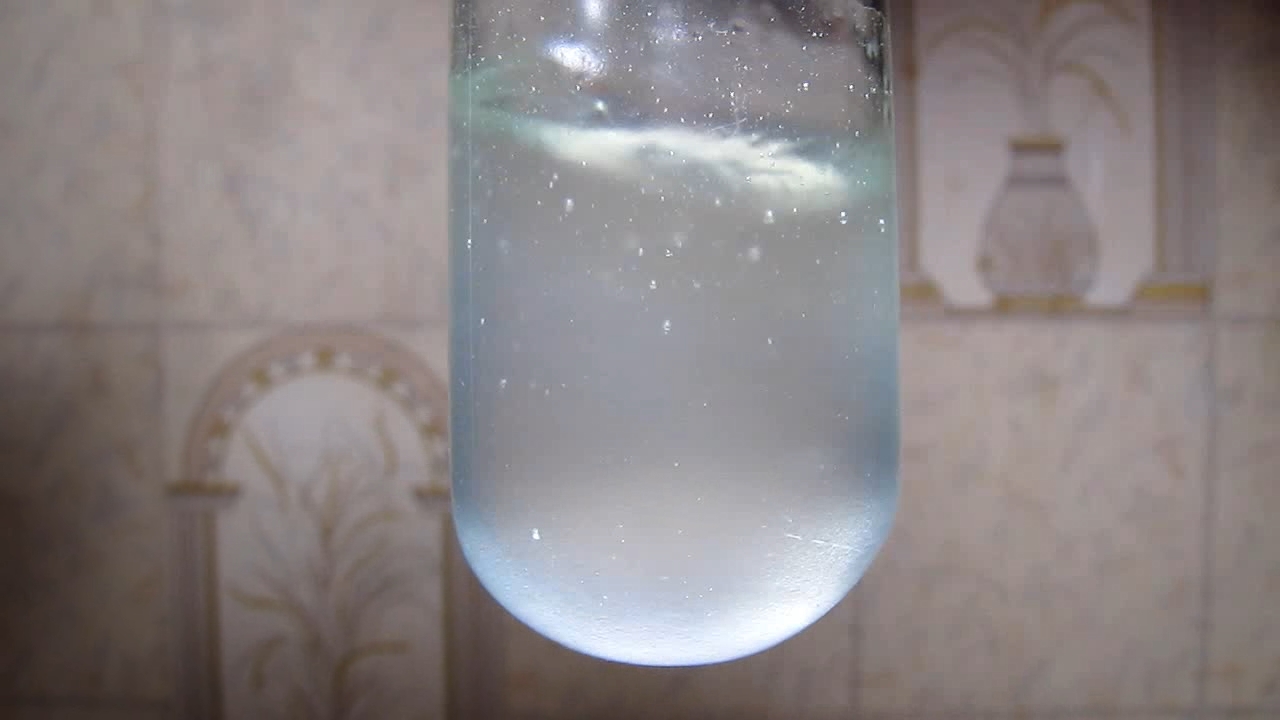
|

|
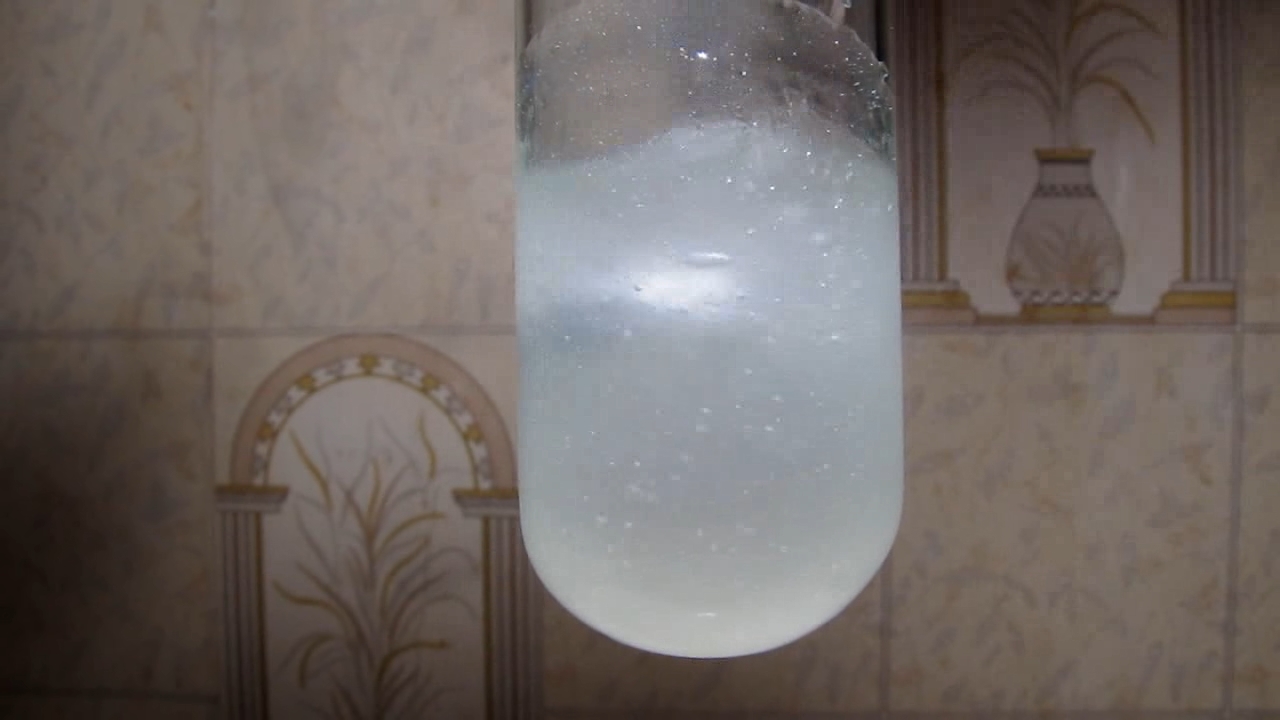
|
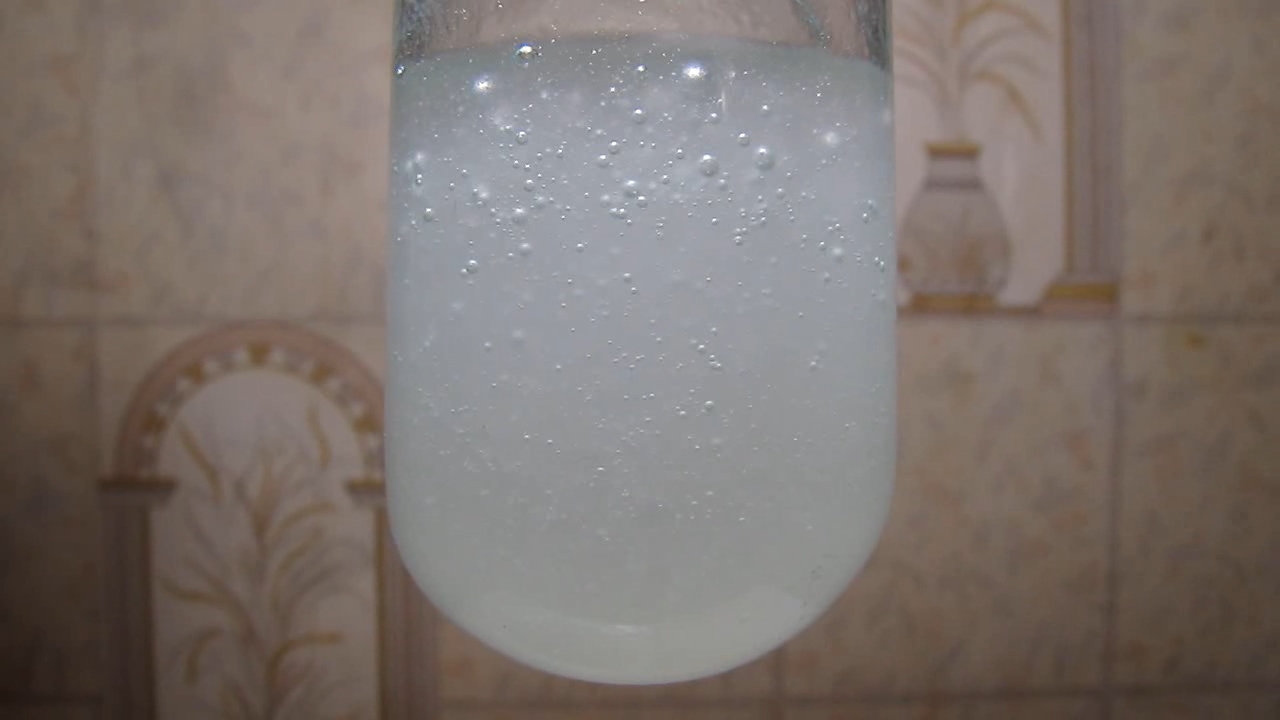
|
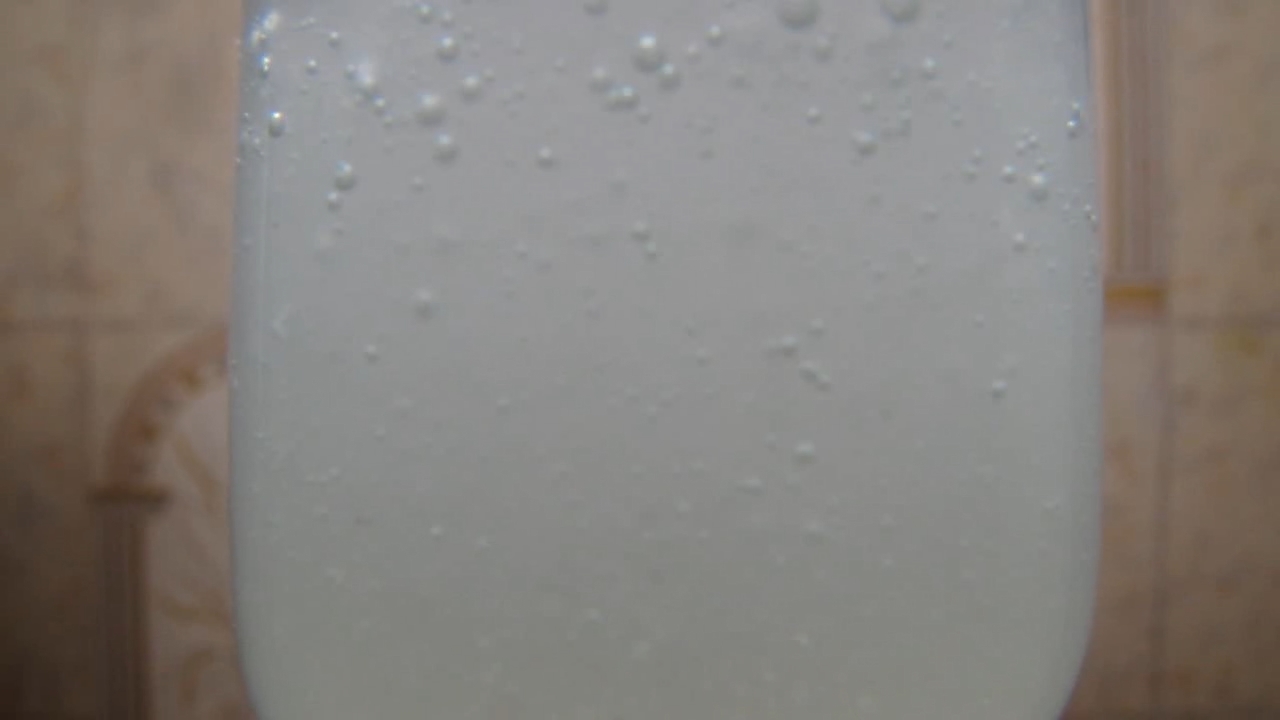
|
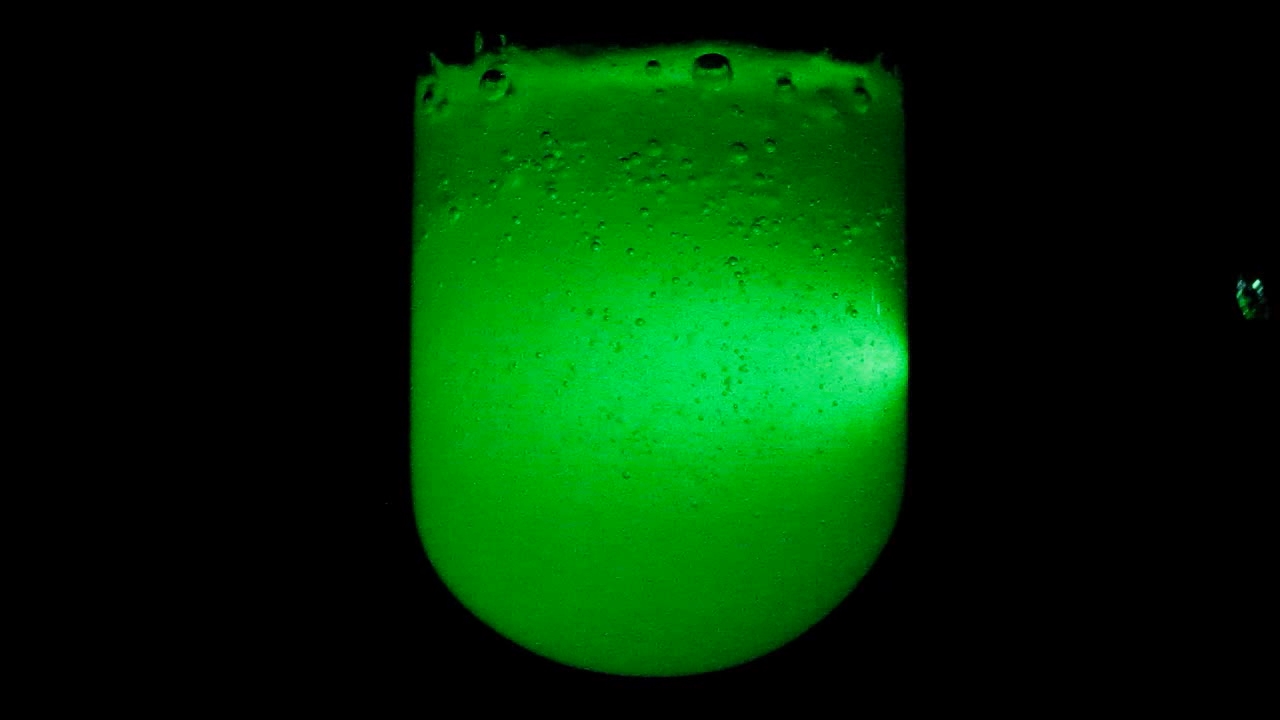
|

|

|
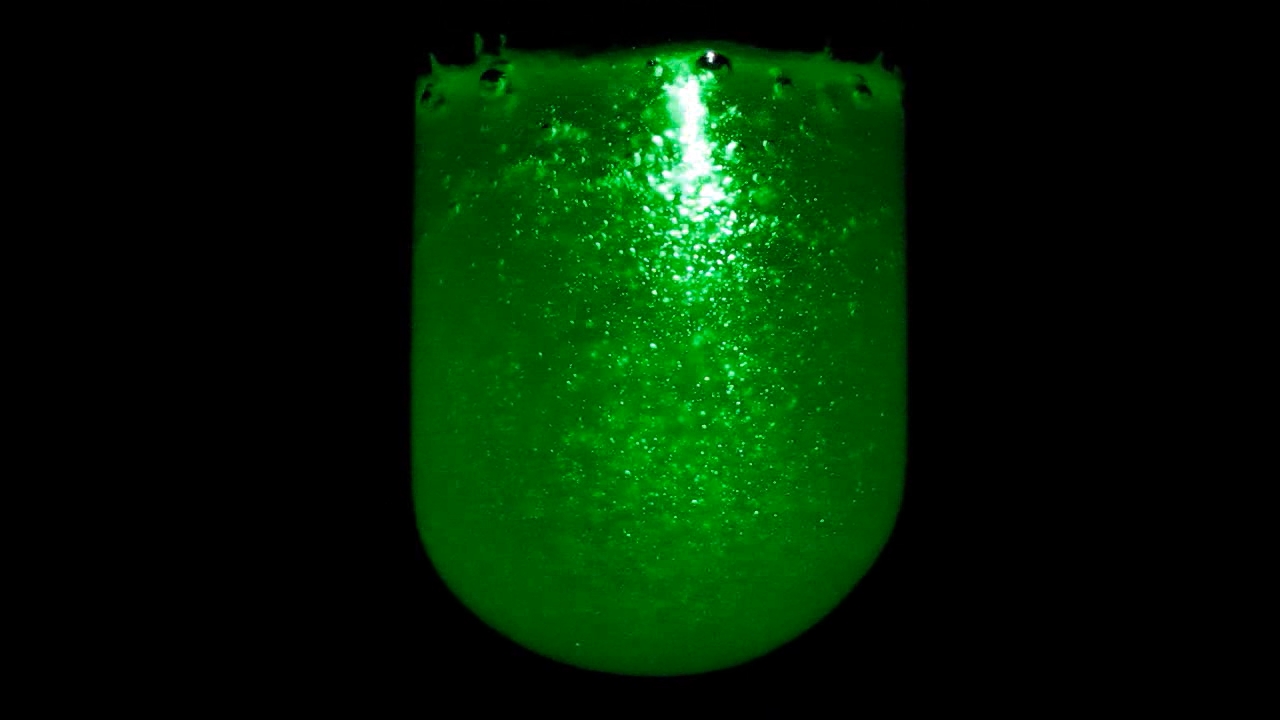
|

|
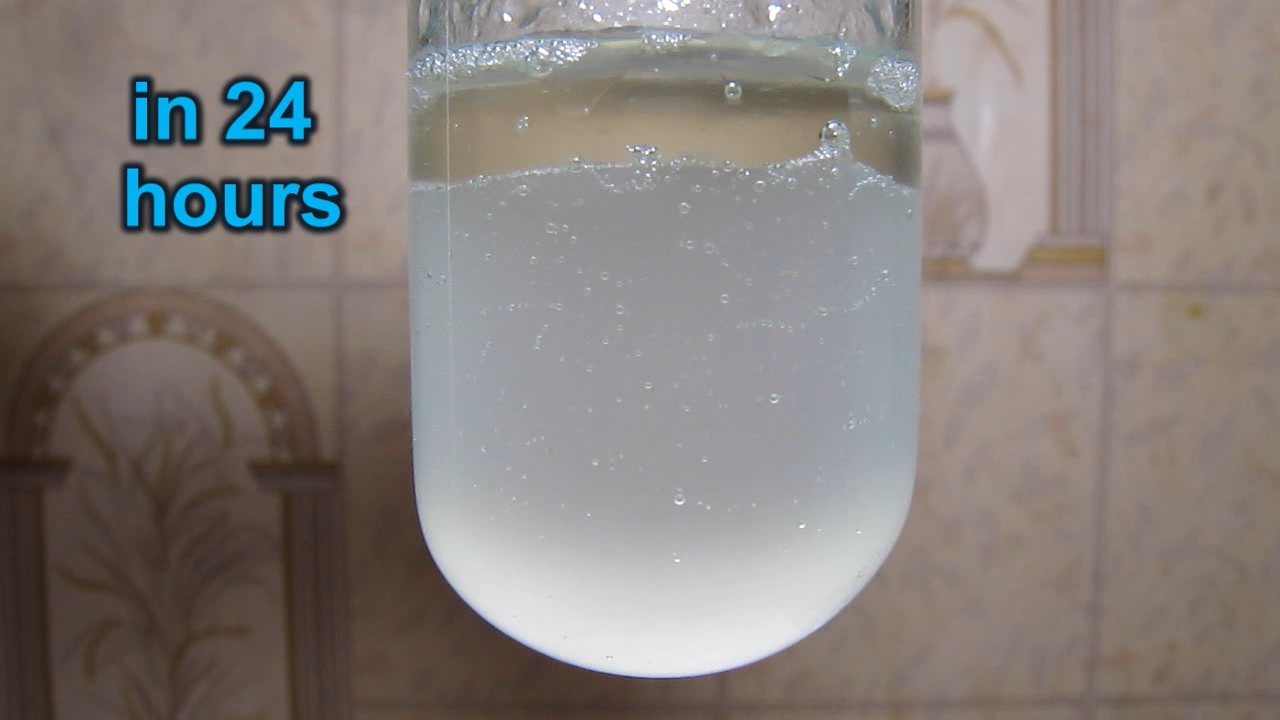
|

|
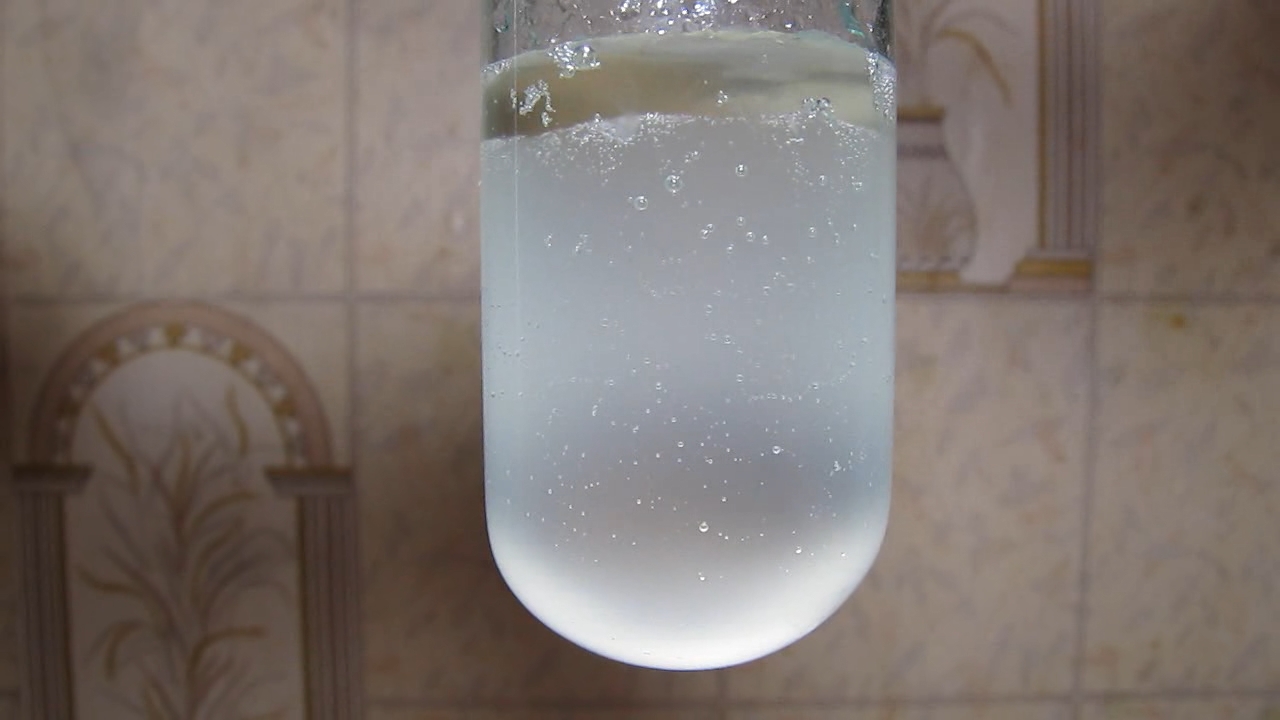
|

|
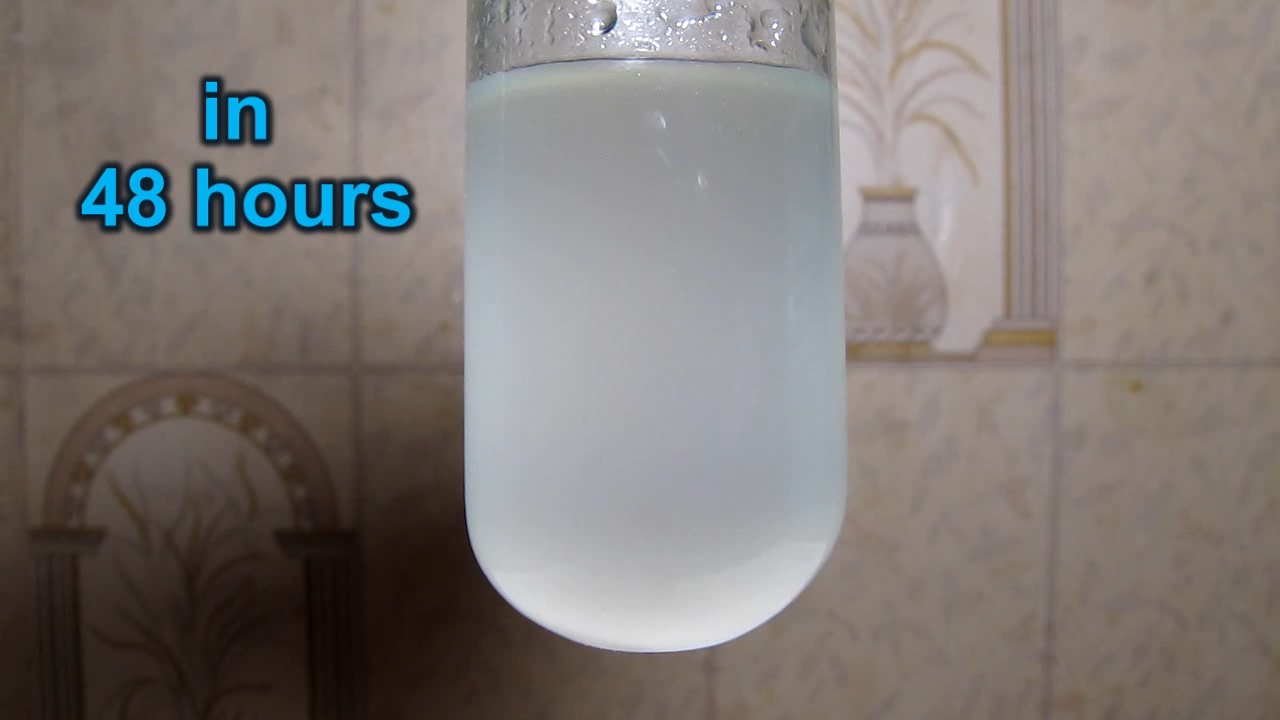
|

|

|

|
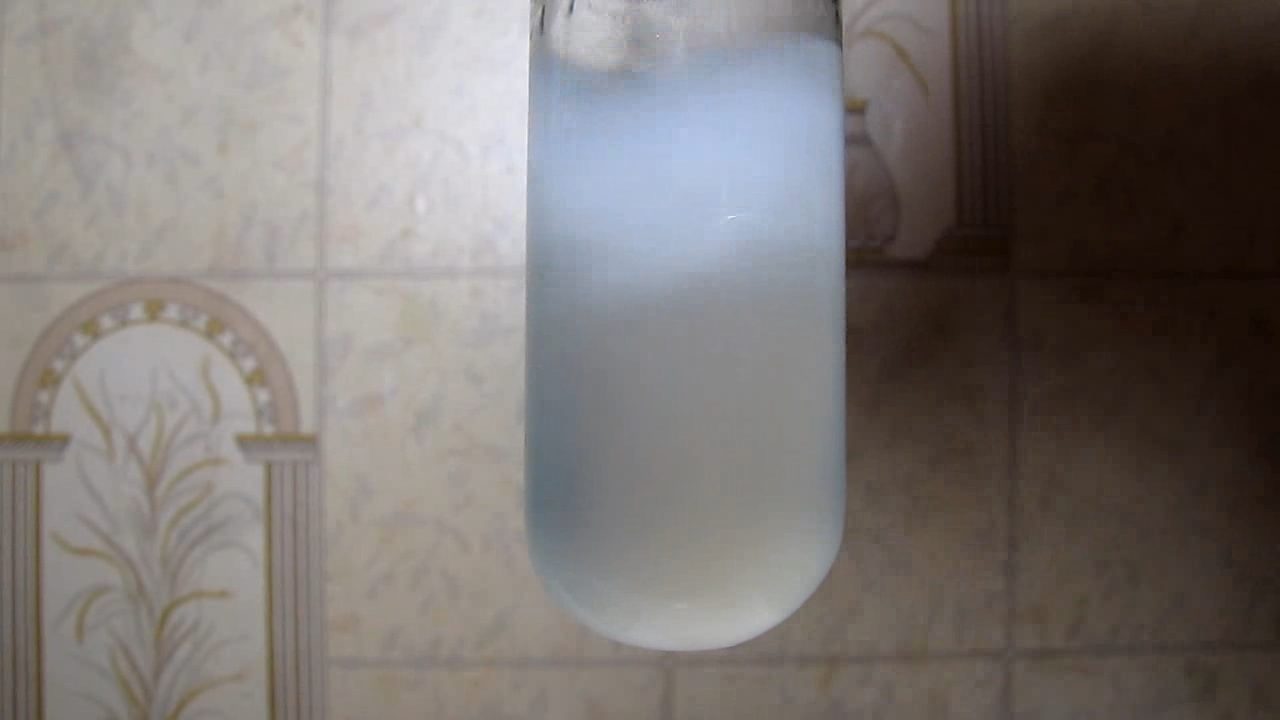
|
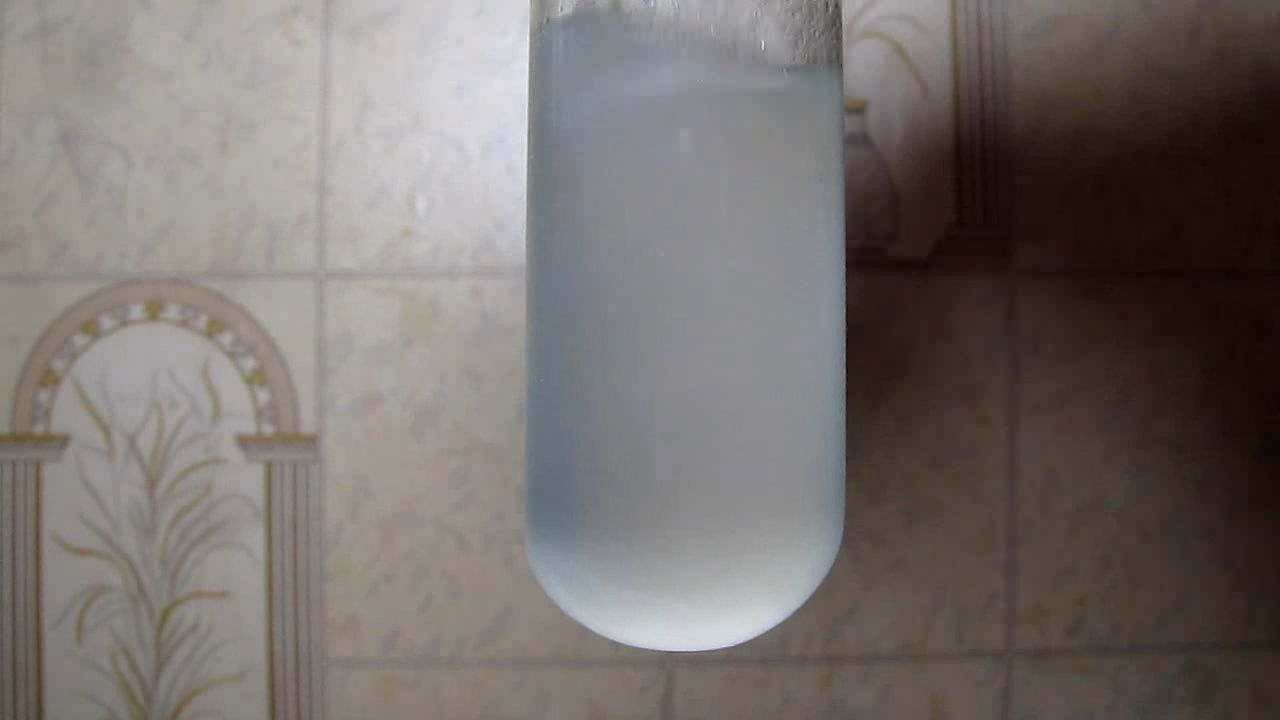
|
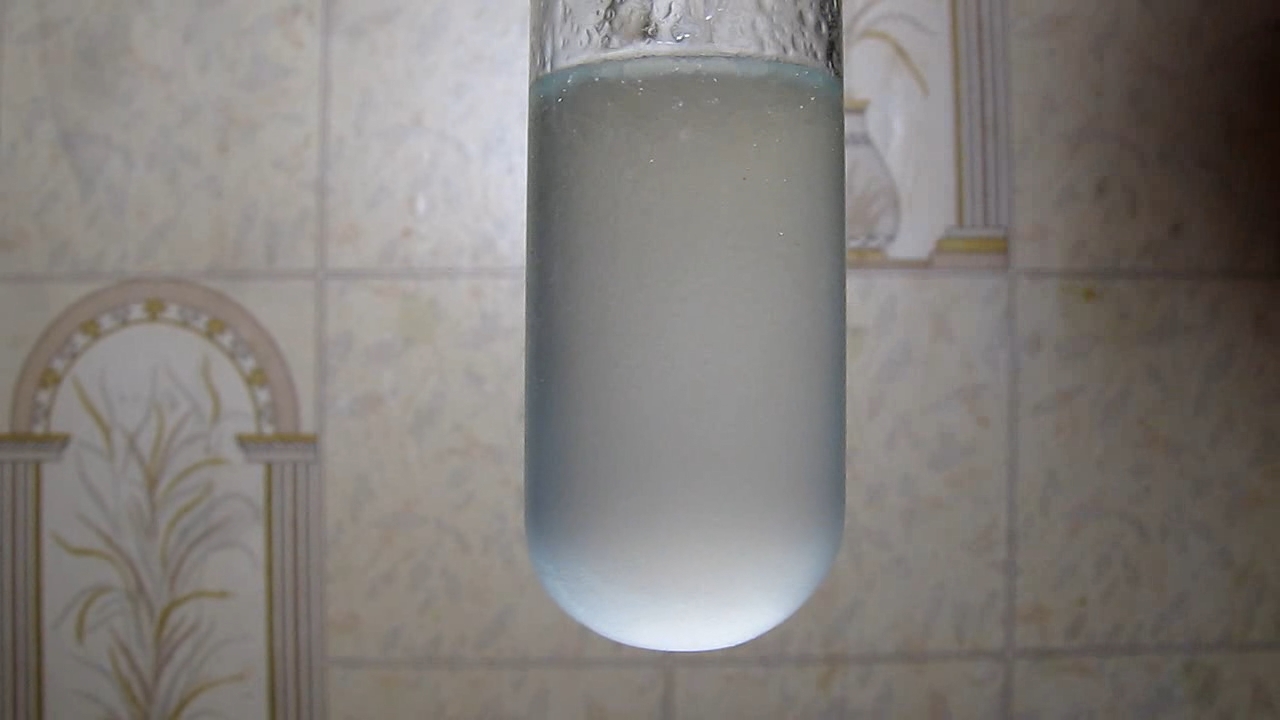
|
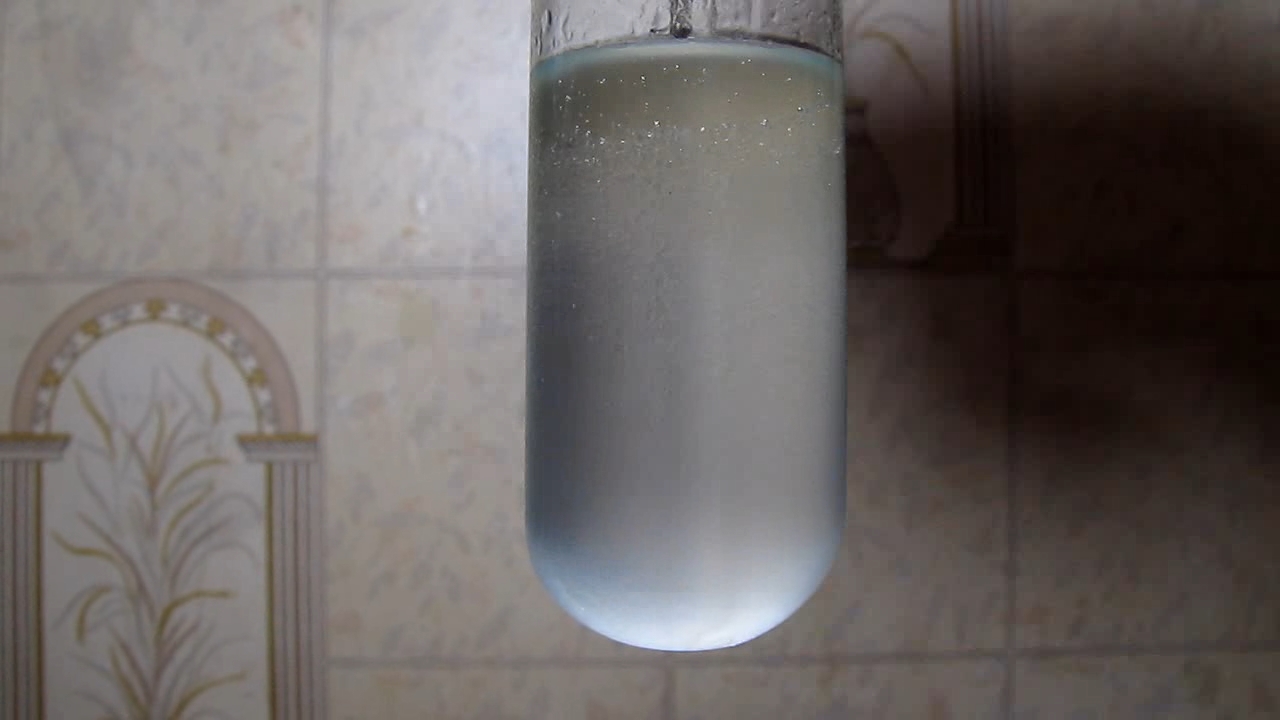
|

|
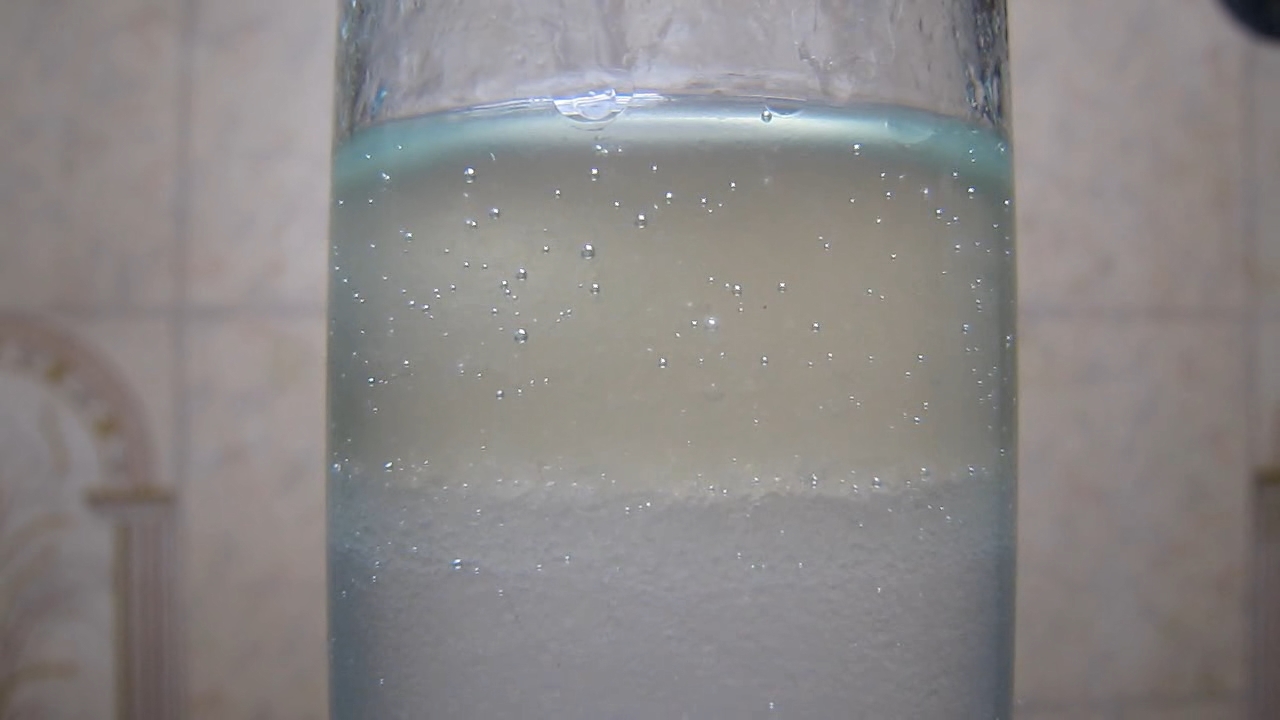
|
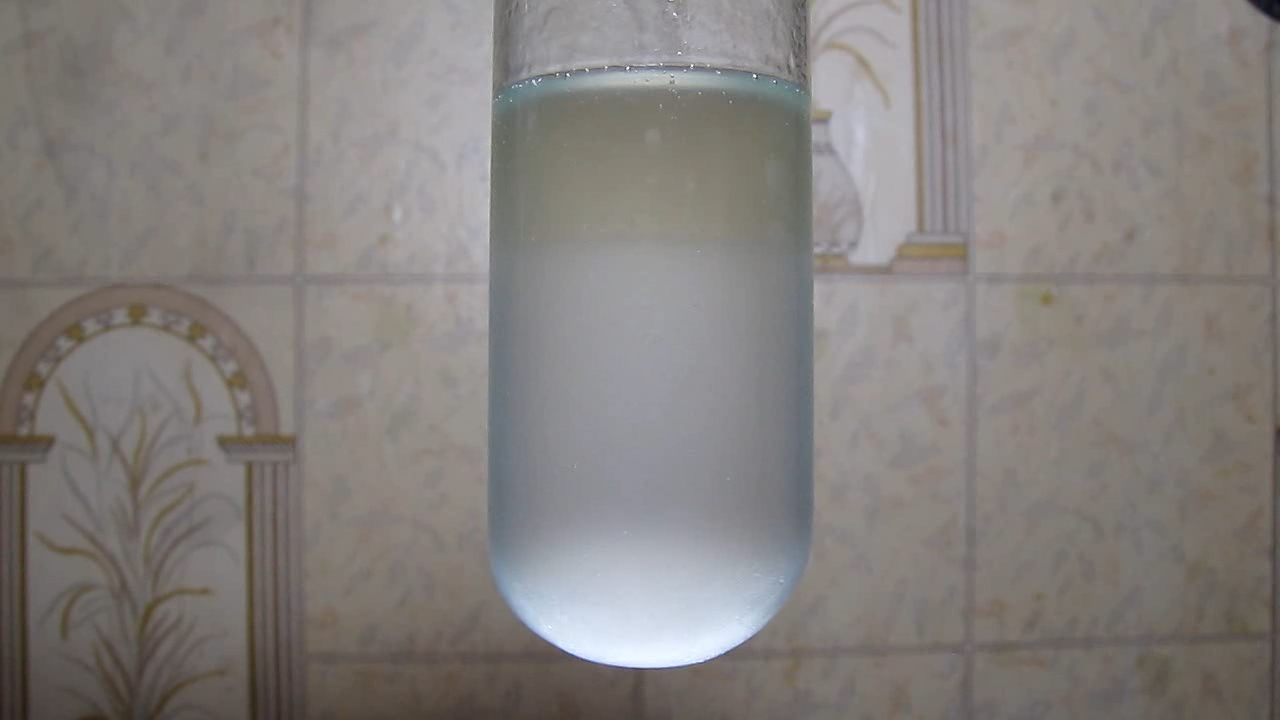
|

|
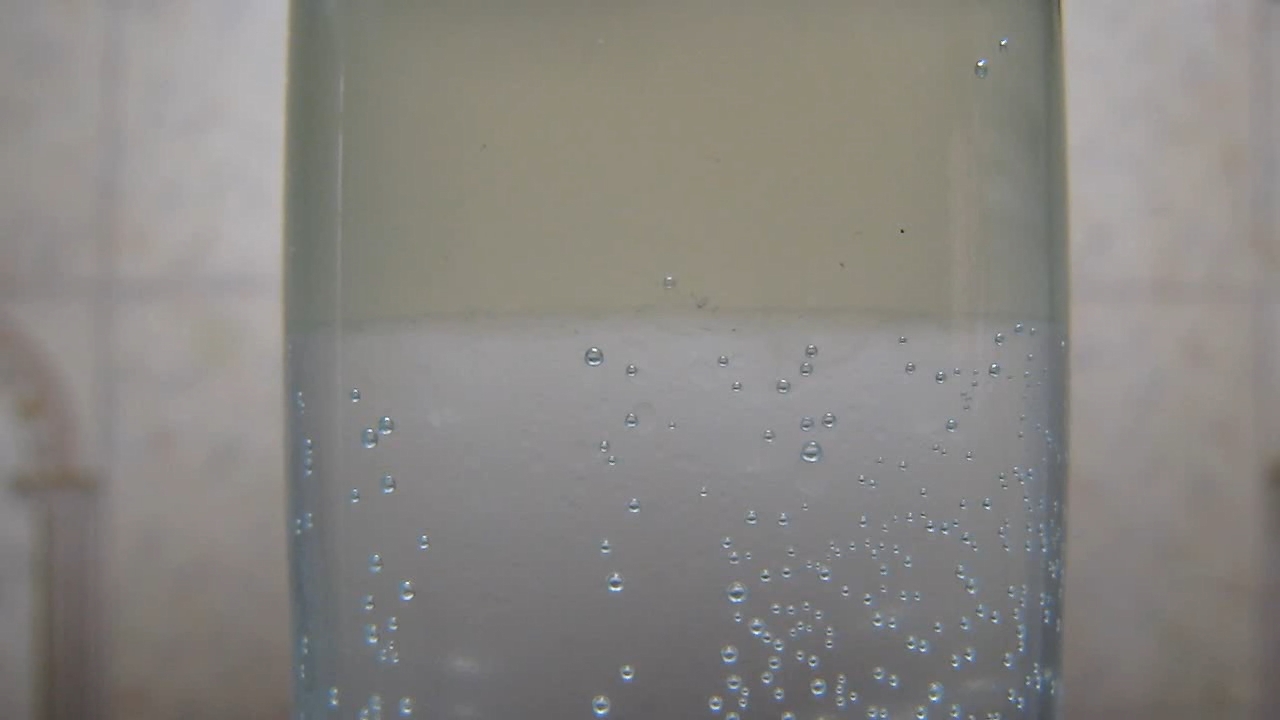
|
|
Having noticed a mistake in the text, allocate it and press Ctrl-Enter
After experiments with castor oil, glycerol, and ethanol, I planned to change the object of experimentation. The reasons were not only physical and chemical but also purely psychological. One of my shortcomings is that I get caught up in experiments with similar or relative objects. If experiments with cobalt are successful, let us try similar experiments using nickel, iron, and manganese. If the experiments with ethanol were successful, let us try a similar approach with methanol, propanol, butanol, and so on. This tactic makes sense because the experimental results allow the behaviour of related substances to be compared. But the main thing is to stop in time. If we switch from butanol to pentanol, hexanol, heptanol etc., we risk not noticing that the novelty effect has been lost.
It is psychologically difficult to stop experiments that give positive but insignificant results and move on to studying objects that are new to you. However, this must be done. For example, I used to work on obtaining substitutional solid solutions between phosphates. I spent a long time in the laboratory, varying different binary combinations of divalent metals. However, it was high time to stop the phosphate synthesis with the same type of methods and write this damned dissertation [1]. Afterwards, I had to defend the dissertation, forget about it, and engage in more important and relevant research. Before the experiment described below, something similar happened. For many years, I have not been involved in science but only shoot videos of chemical experiments; however, the principle is the same in this field. There is a risk of getting hung up on experiments of the same type instead of switching in time to other, more interesting, experiments. I should not be proud of my shortcomings but need to fight them. Common sense told me to stop experimenting with alcohols and vegetable oils. Moreover, I have many ideas for new experiments, as well as several started but unfinished experiments. Unfortunately, I remembered there was a 6-litre bottle of glycerol in the neighbouring laboratory. The owners were happy to share - they rarely work with glycerol, and this amount will last them for years. Sunflower oil is sold in any grocery store. Of course, I could not resist the temptation and began experiments with glycerol and sunflower oil. 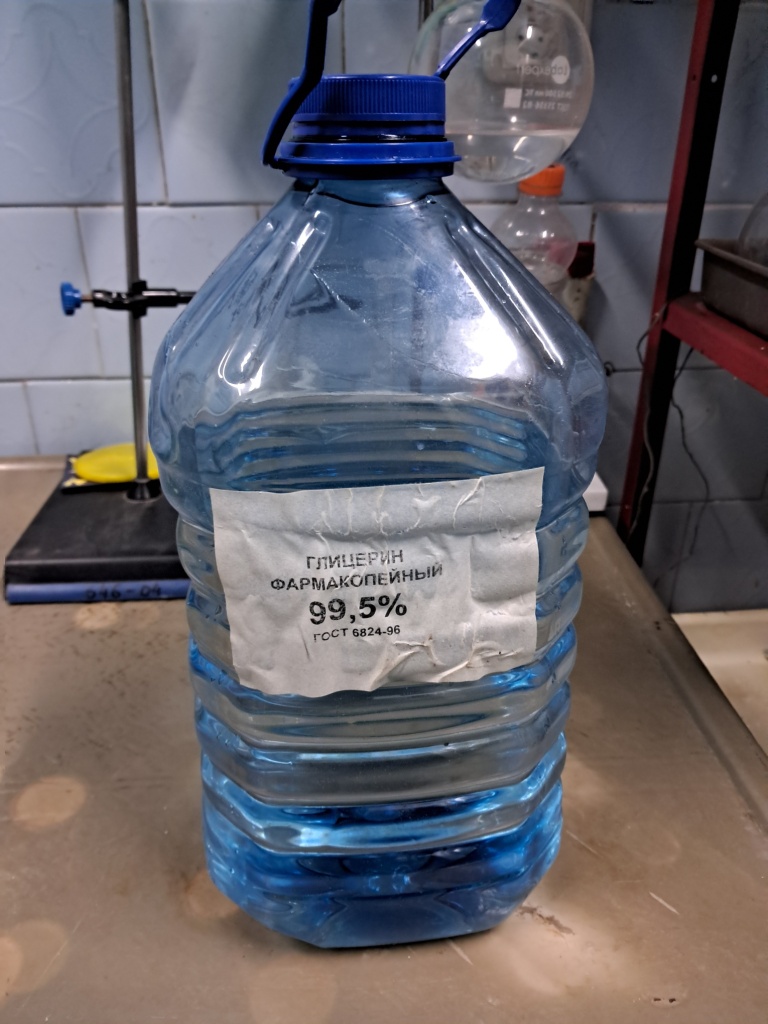 Glycerol I did not doubt that glycerol would not mix with sunflower oil, but I hoped that the two liquids would form a stable emulsion, as was the case with glycerol and castor oil in the previous experiment. To begin with, I poured 20 ml of sunflower oil into a test tube and added a few drops of glycerol. The glycerol sank to the bottom. I tried to mix the liquids; however, it was difficult to disperse the small amount of glycerol in the excess of sunflower oil. I added another 4 ml of glycerol and again mixed the liquids. The dispersion process became now easier, but it remained ineffective. It needed to add more glycerol. I added another 10 ml of glycerol (the total volume was 14 ml) and mixed the contents of the test tube. The result was a slightly cloudy emulsion. It was much more transparent than the emulsion of castor oil in glycerol obtained in the previous experiment. The emulsion of sunflower oil in glycerol turned out to be not only more transparent but also much less stable. Even with the naked eye, it was noticeable that the mixture of the two liquids was heterogeneous. Small droplets of sunflower oil merged into larger ones and rose upward, forming a yellow layer of oil. It only took a few minutes for the oil layer to form. Under the oil layer, the cloudy layer of "oil-in-glycerol" emulsion remained. Most of the sunflower oil still remained in the emulsion, but the top layer of oil gradually increased in thickness. The most interesting thing happened when I passed a green laser beam through the test tube. When the direction of the beam was horizontal, the beam, passing through the top layer, looked like a thin yellow line with clear boundaries. This indicated that the sunflower oil layer contained few dispersed particles. Passing through the lower layer of the emulsion, the beam turned into a wide and bright cone with fuzzy (diffuse) boundaries. The colour of the cone was white-green. I believe that the diffuse boundaries of the cone indicated that the size of the oil droplets in the emulsion varied greatly. If the laser beam was directed vertically into the test tube, the upper part of it looked like a thin yellow line, and the lower part looked like a wide white-green diffuse cone. Over time, the emulsion gradually broke down, the upper yellow layer increased, and the lower one decreased and became more transparent. Accordingly, the laser beam in the lower layer formed an increasingly narrow and dimmer cone. If the contents of the test tube were mixed, the top layer of oil was dispersed. As a result, the horizontal laser beam formed a bright cone along the entire liquid height. When staying, the emulsion broke down, and the top layer of oil appeared. Now, when passing a vertical beam, two zones were formed. The beam was thin and yellow in the upper layer of the liquid and wide, conical, and white-green in the lower layer. It was necessary to leave the test tube for a day to see if the emulsion would collapse completely, after which the experiment would be over. I thought so. However, while watching the video, I discovered that, along with the glycerol, a piece of dry grass got into the test tube. This was not critical, but the grass spoiled the quality of the video. So I decided to redo the experiment. This time, I used equal amounts of sunflower oil and glycerol that were 20 ml each. The result was similar... including another blade of grass that got into the test tube together with glycerol. Moreover, the blade of grass was visible even more clearly in the video. I had to redo the experiment a third time. This time, I decided to change the proportion of liquids, taking 15 ml of sunflower oil and 25 ml of glycerol (i.e. there was less oil than glycerol). Surprise! But, it was an unpleasant surprise. It turned out that I did not have 25 ml of glycerol on hand since the glycerol I brought from the laboratory was no longer enough. Fortunately, I remembered that I kept a bottle with some glycerol at home that was left over from experiments with large soap bubbles and after obtaining nitroglycerin. I conducted this synthesis over 10 years ago, working in a well-equipped laboratory. I added a little "not-synthesized nitroglycerin" (i.e., my glycerol from old stocks) to the glycerol given by my neighbours. After that, I understood where the grass came from during my two previous experiments. The laboratory where I was given glycerol conducts radiological research on plants. After the accident at the Chornobyl (Chernobyl) nuclear power plant, this was a very relevant topic. Now, the mentioned work is carried out by inertia. In their laboratory, various types of grass and weeds, which are being dried, are laid out everywhere. Not surprisingly, some pieces of the herb found their way into the glycerol bottle. 
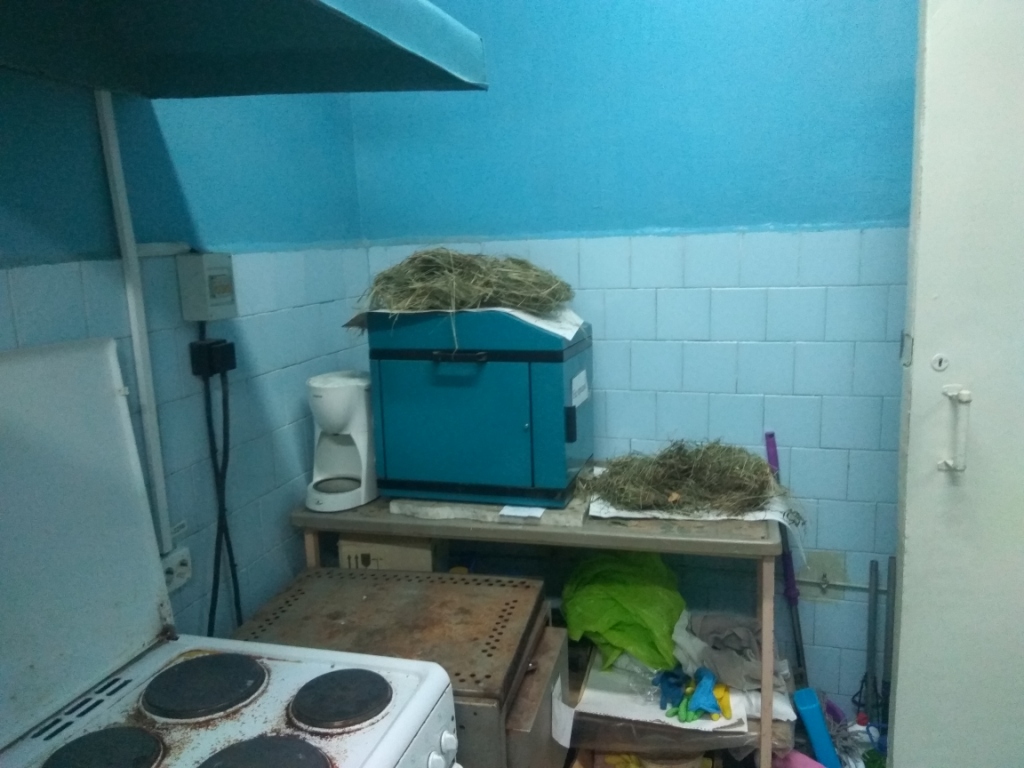
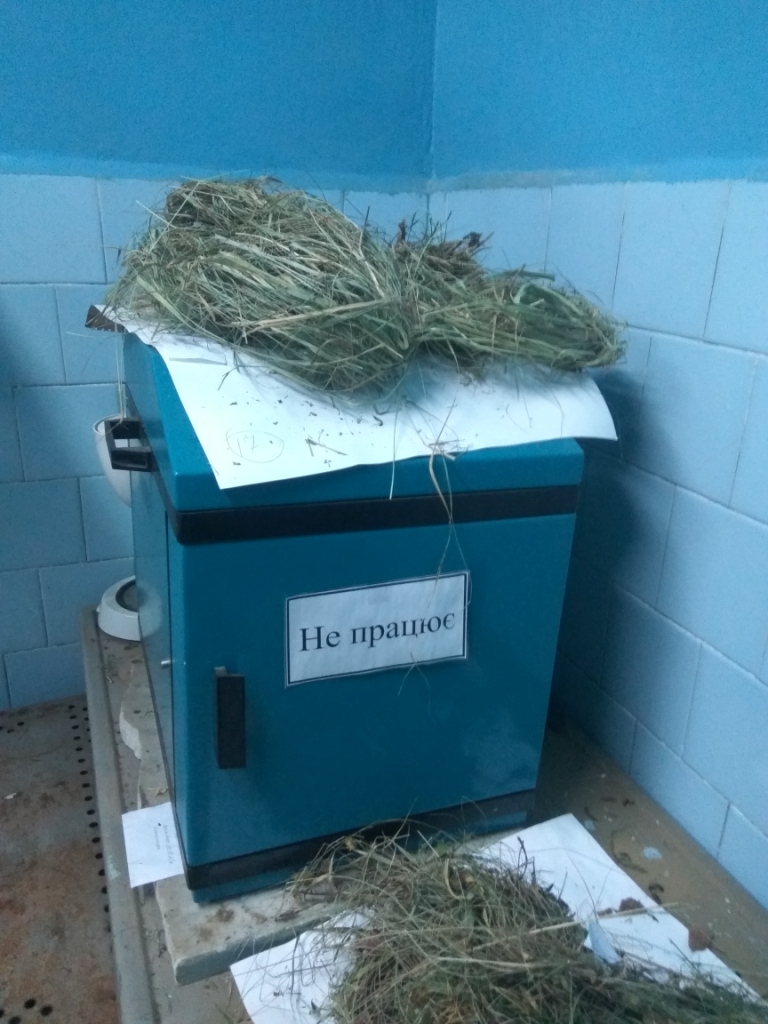
I looked carefully at the glycerol I was going to use for the third repeat of the experiment and did not find any blades of grass in it (it was a mixture of glycerol taken from the radiologists with glycerol stored at home). Therefore, I conducted the experiment. It would have been better to throw out this glycerol and use instead the glycerol from an old stock. Why? It turned out that a small piece of grass again appeared in the video. A blade of grass, which is difficult to notice with the eye, is clearly visible in the macro video. However, I did not redo the experiment a fourth time. After standing for 10 hours, the third sample (15 ml sunflower oil + 25 ml glycerol) consisted of two layers. The yellow oil collected on top (no cloudiness), and a slightly cloudy layer of glycerol was underneath (a small amount of sunflower oil remained dispersed in the glycerol). After 24 hours, the turbidity of the glycerol layer decreased but was noticeable if a black object was placed behind the layer. After 24 hours, the second sample (20 ml sunflower oil + 20 ml glycerol) consisted of three layers: a top layer of clear yellow oil, a middle layer of cloudy glycerol, and a slightly cloudy glycerol layer at the bottom. No distinct phase boundary was observed between the lower and middle layers; the distribution of dispersed particles throughout the glycerol volume appeared uneven (this explains the formation of two layers in the glycerol). As you can see, there was no need to add ethanol this time since the emulsion collapsed on its own. Castor and sunflower oils behave differently when mixed not only with ethanol but also with glycerol. __________________________________________________ 1A candidate's degree dissertation (thesis) is the approximate equivalent of a PhD thesis. |
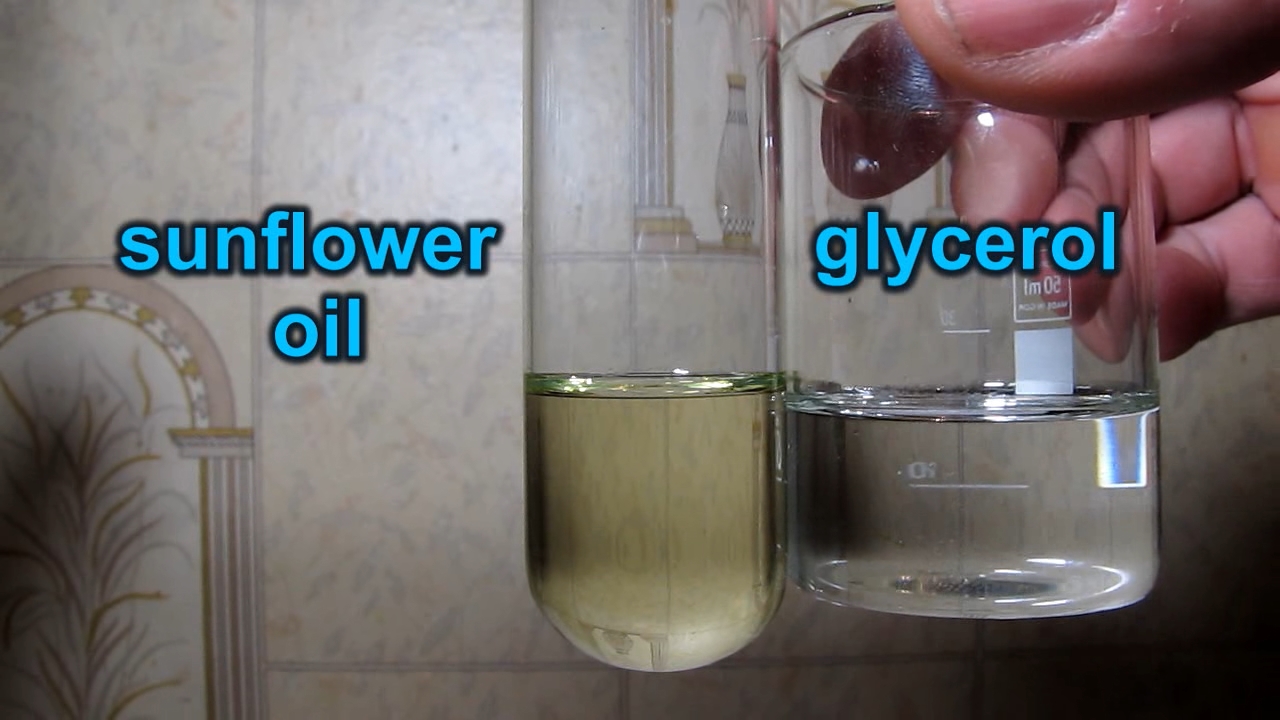
Sunflower oil and glycerol |
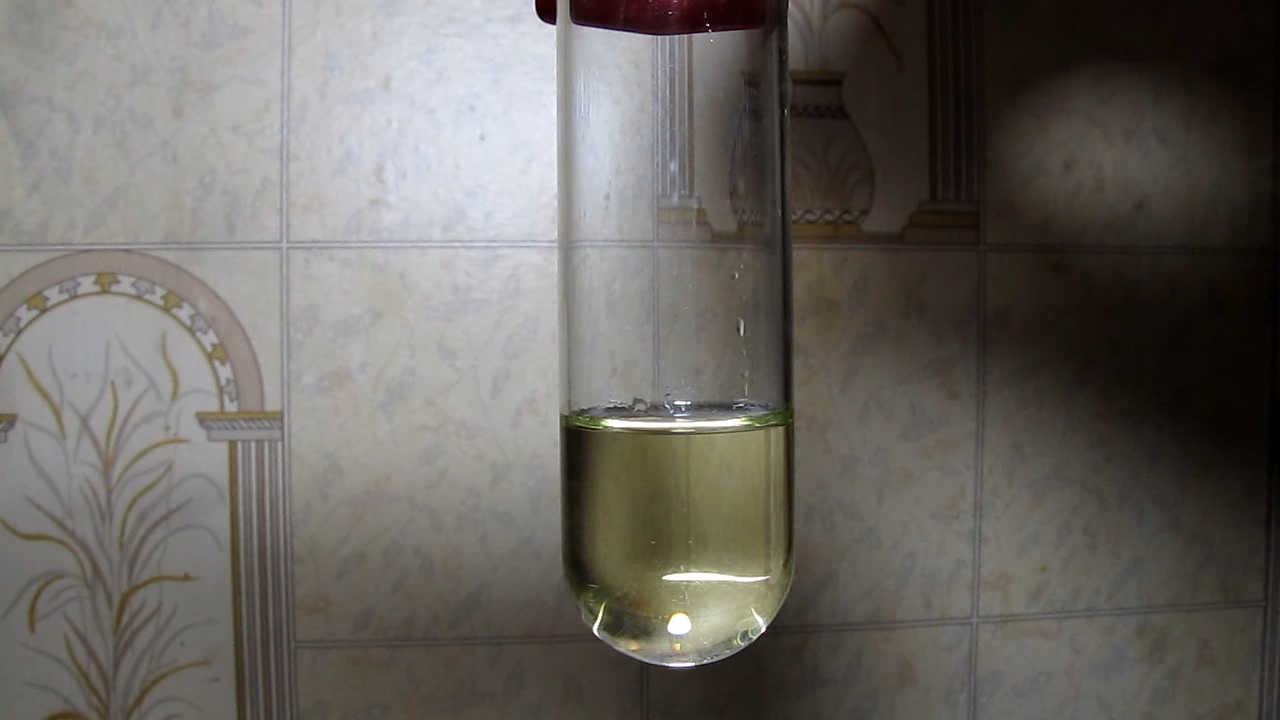
|

|

|

|
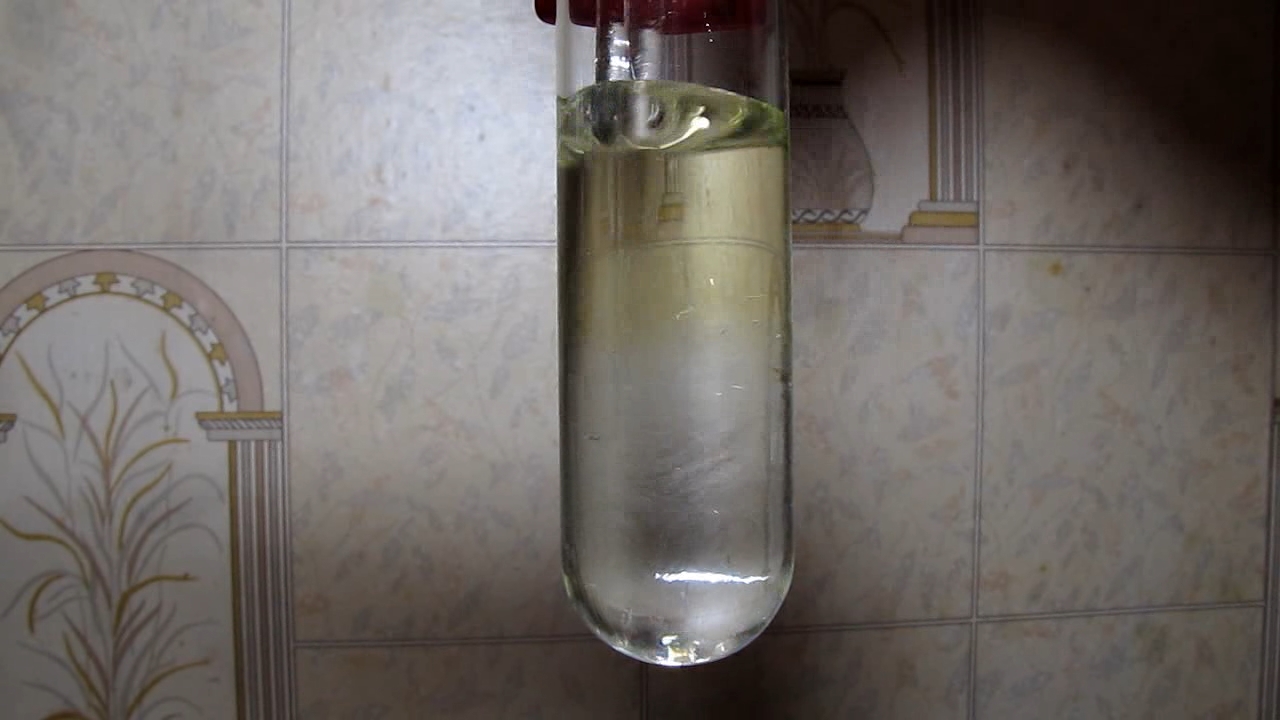
|

|

|
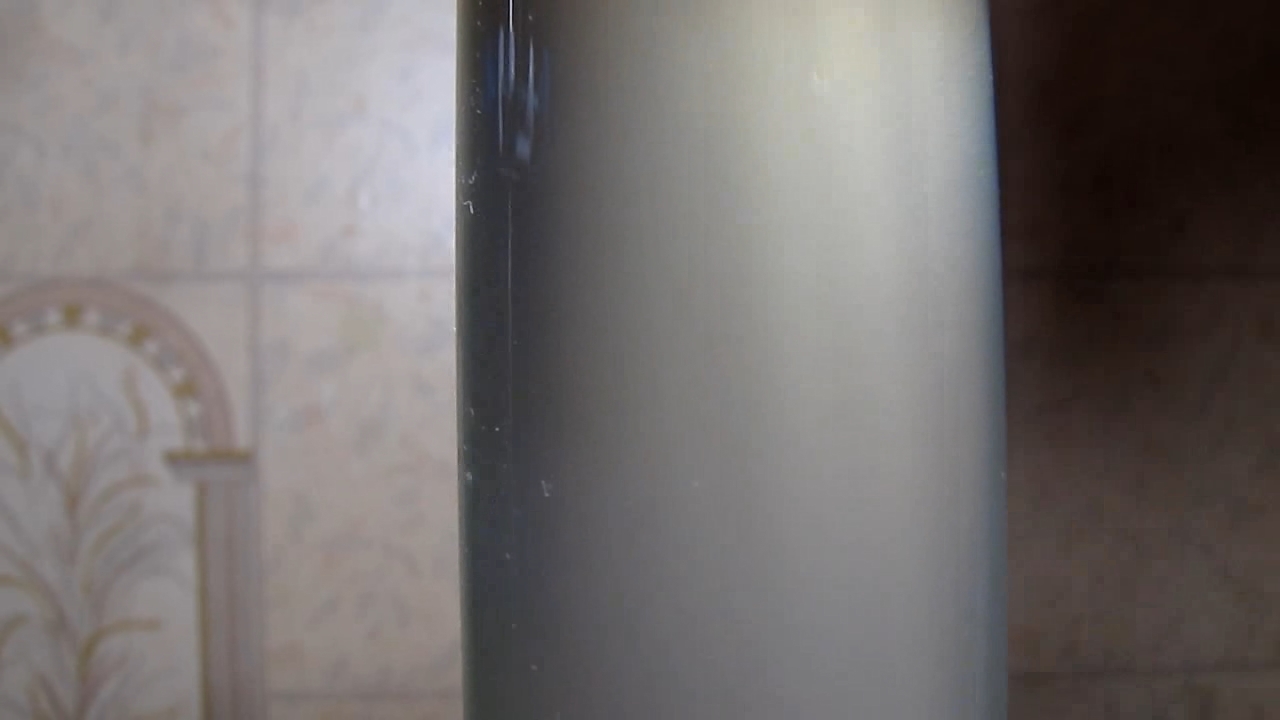
|
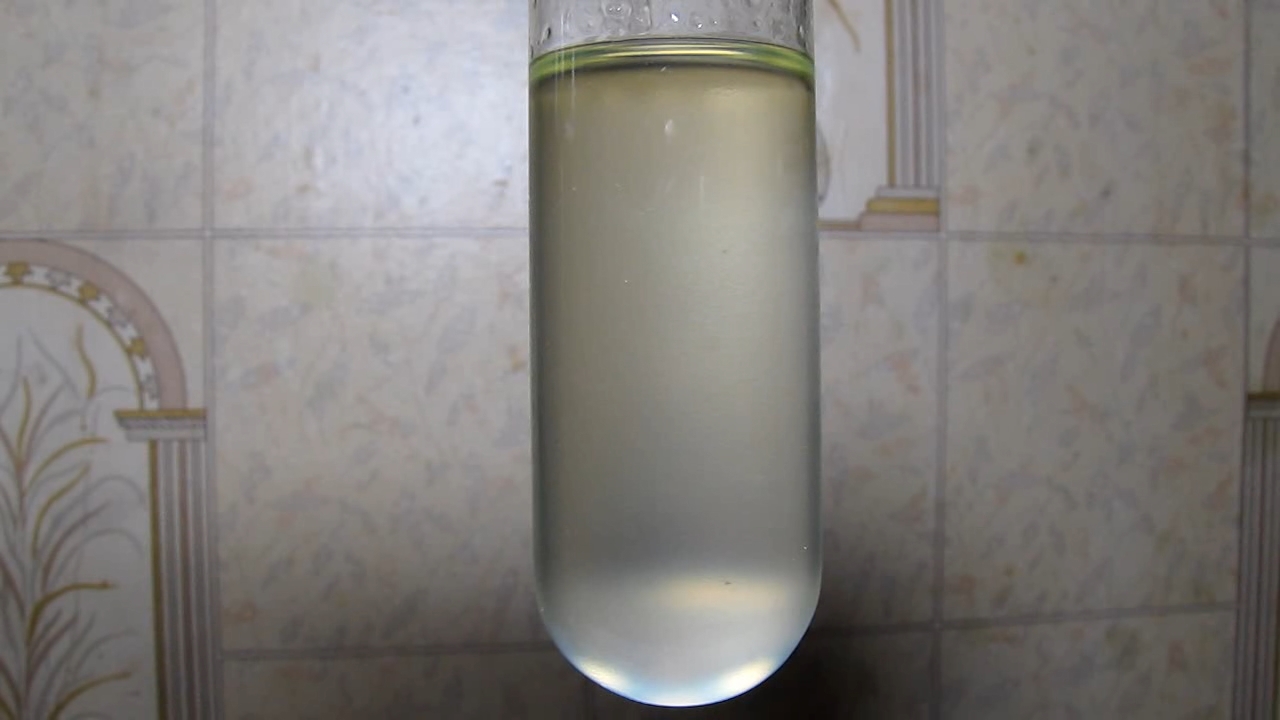
|
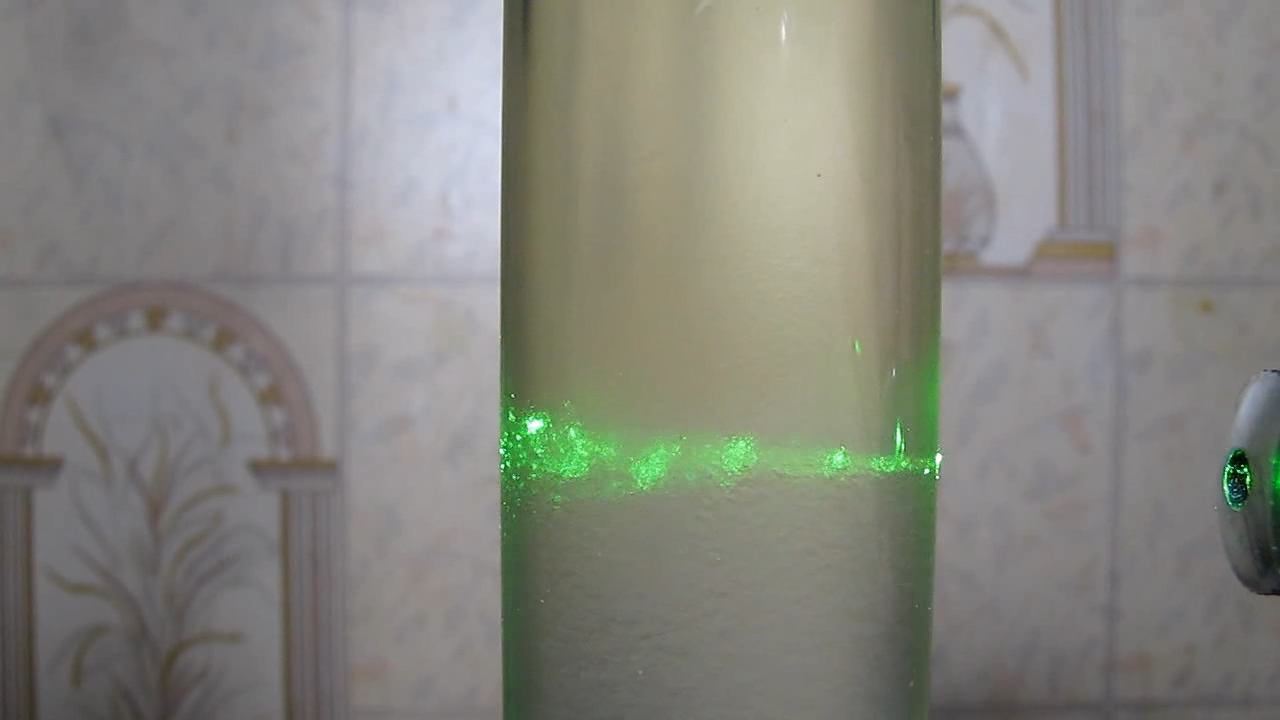
|
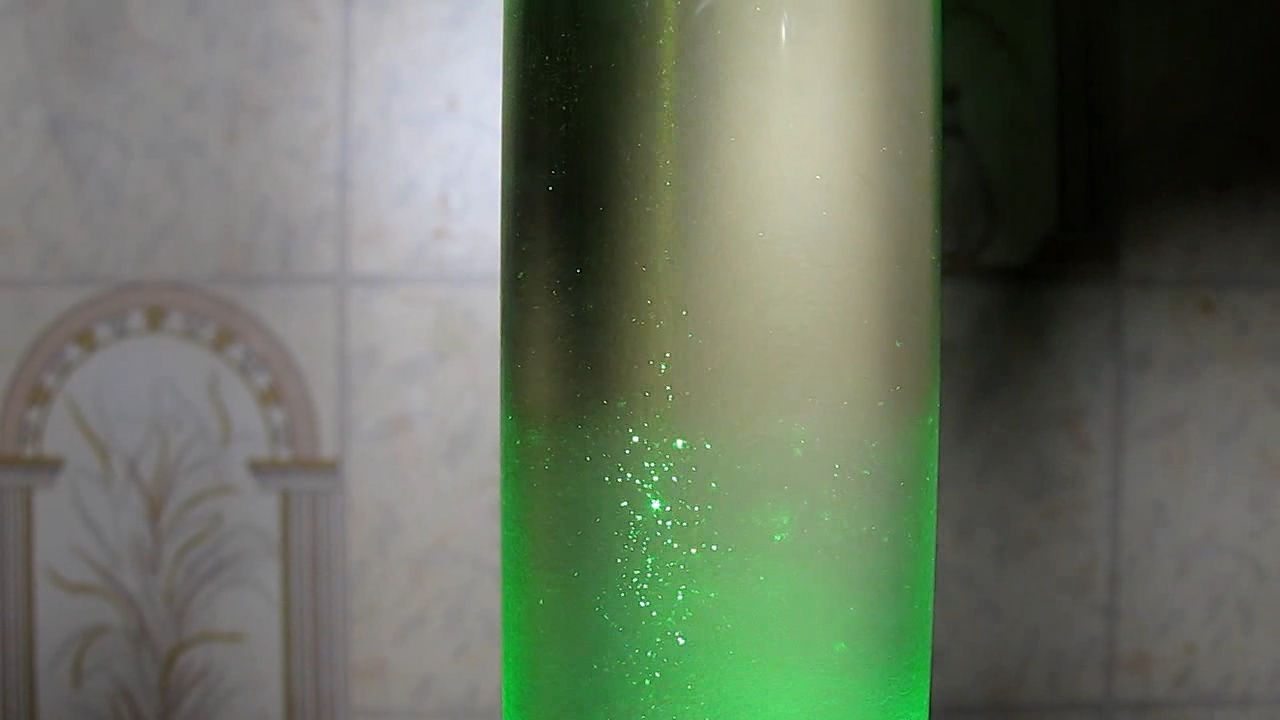
|
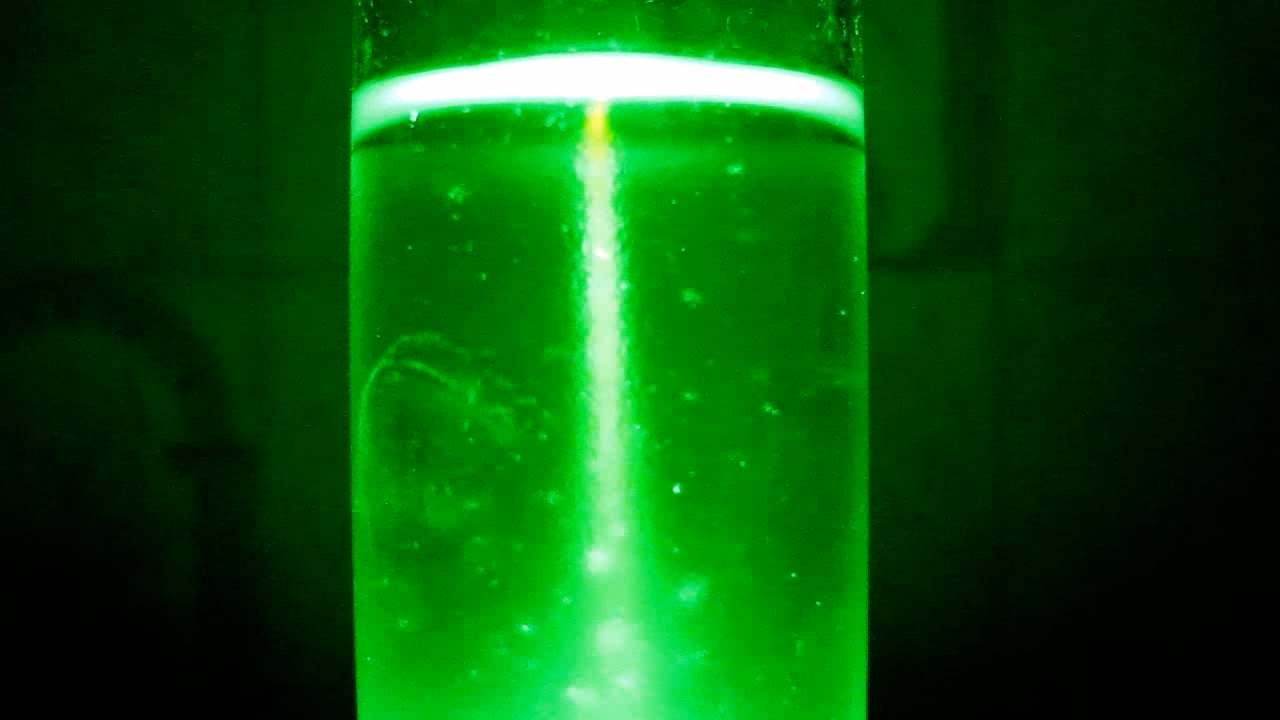
|
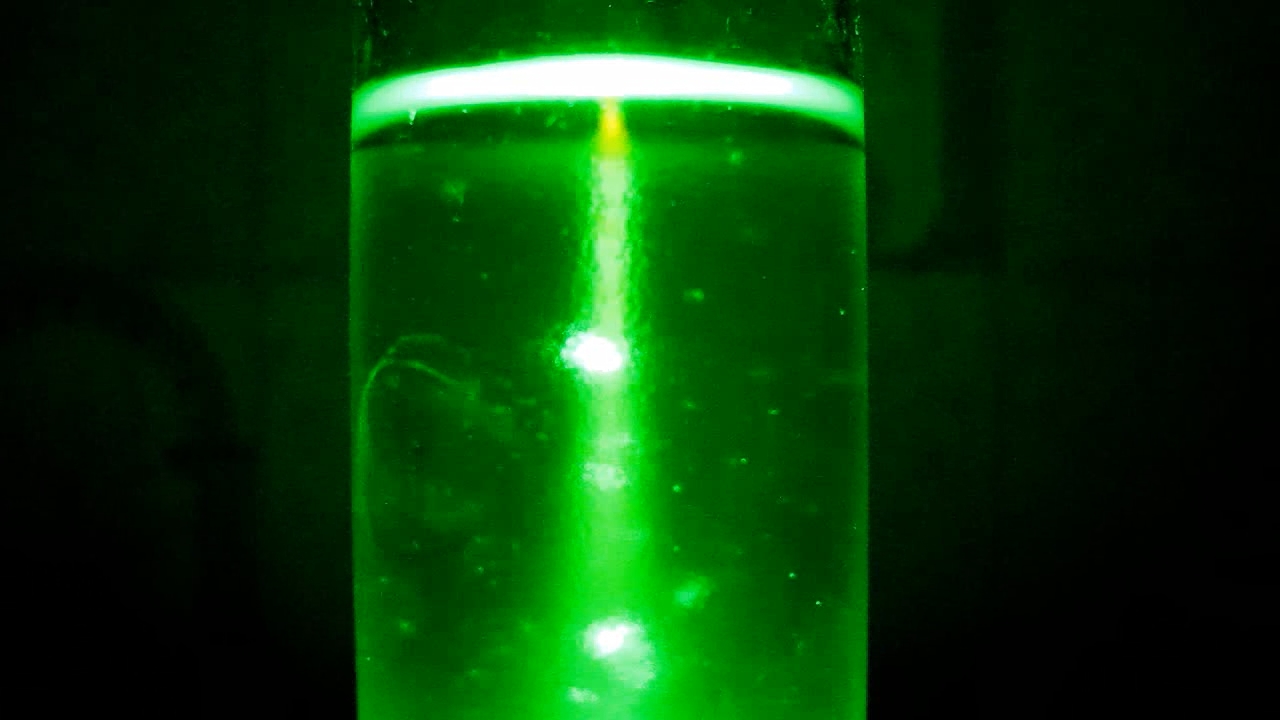
|

|
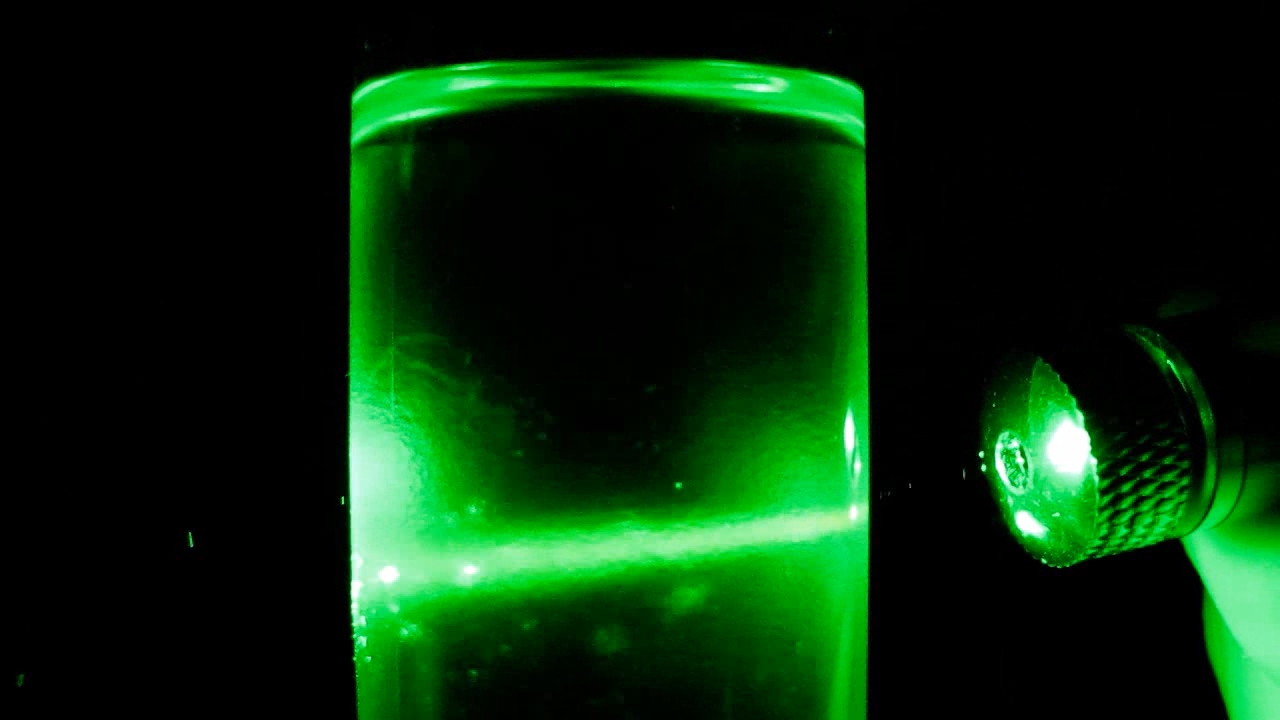
|
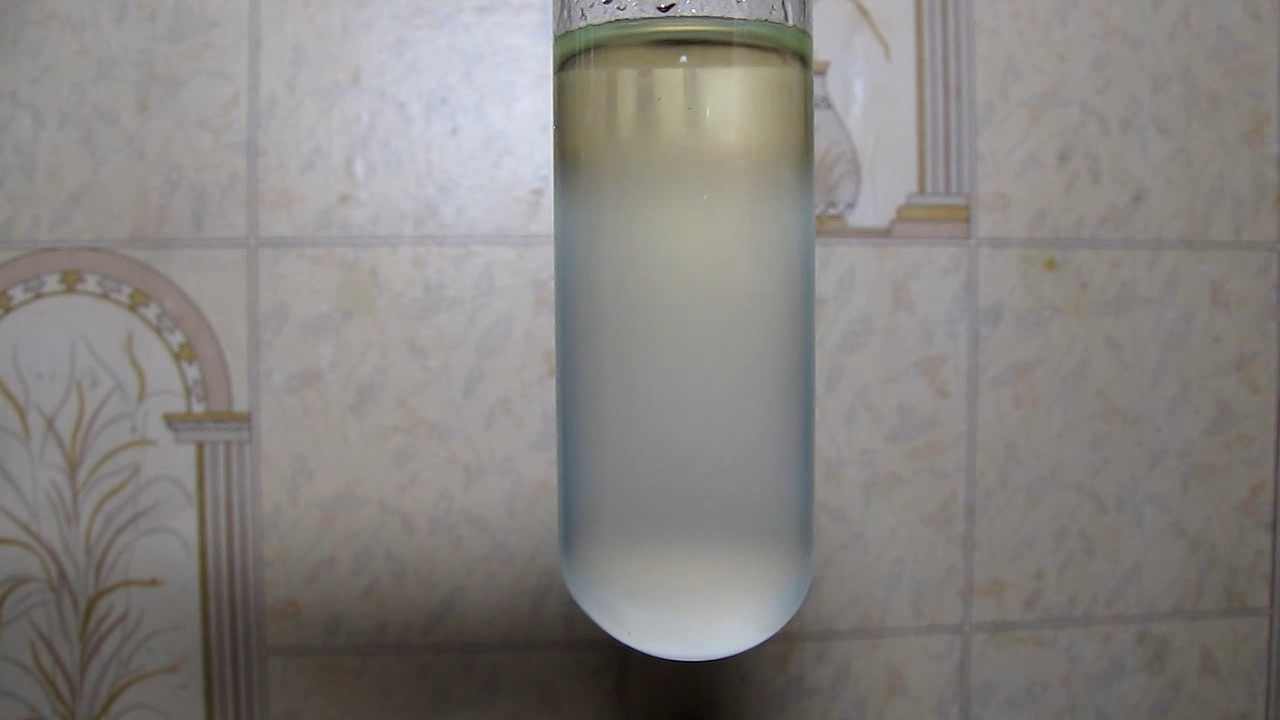
|
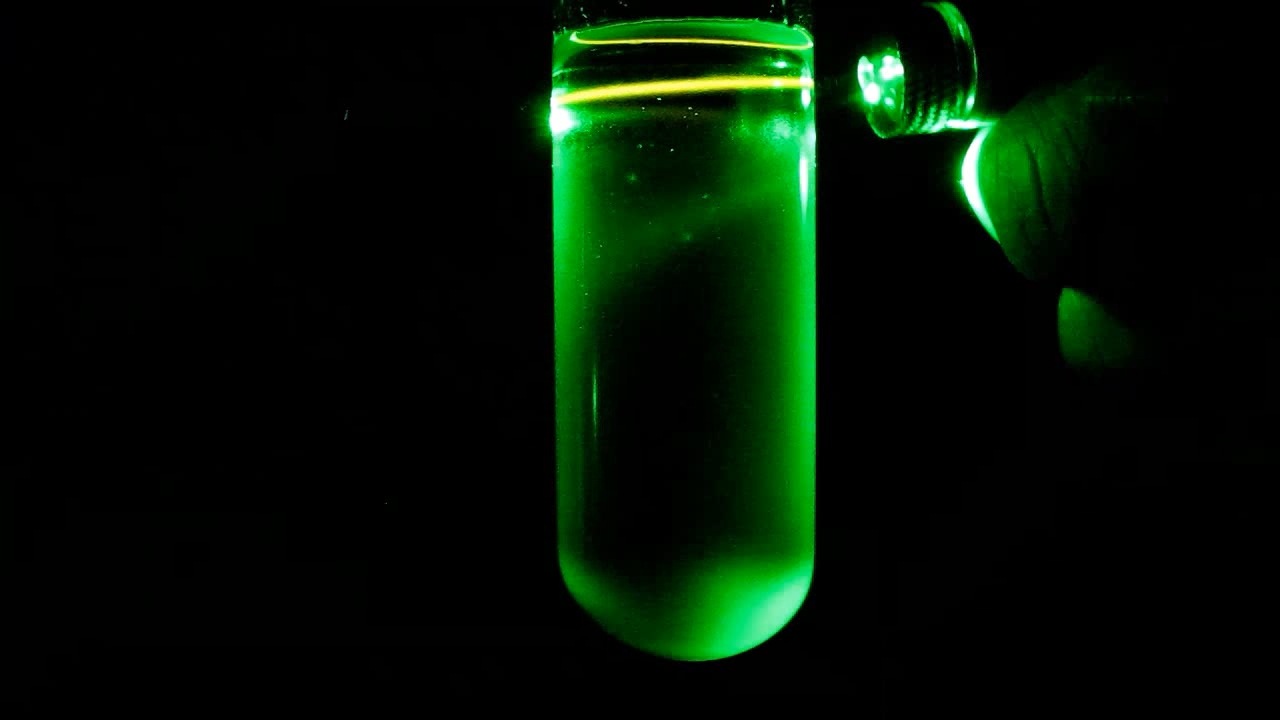
|

|
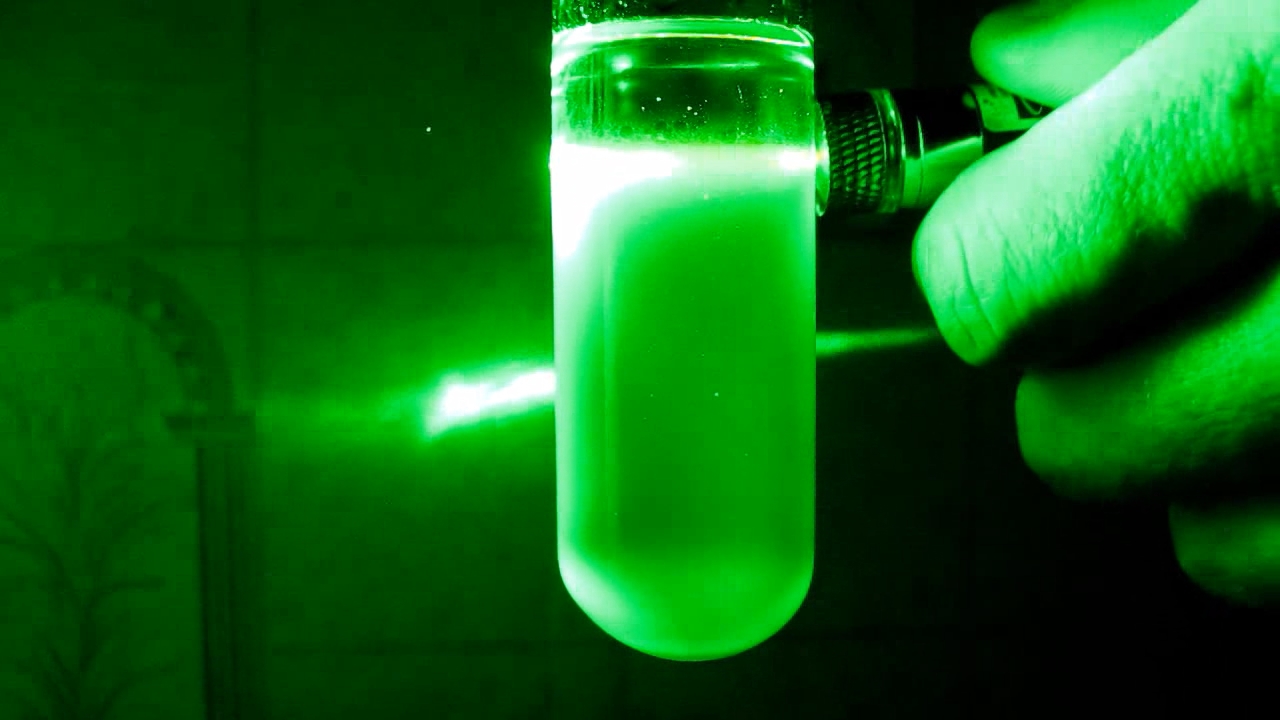
|

|
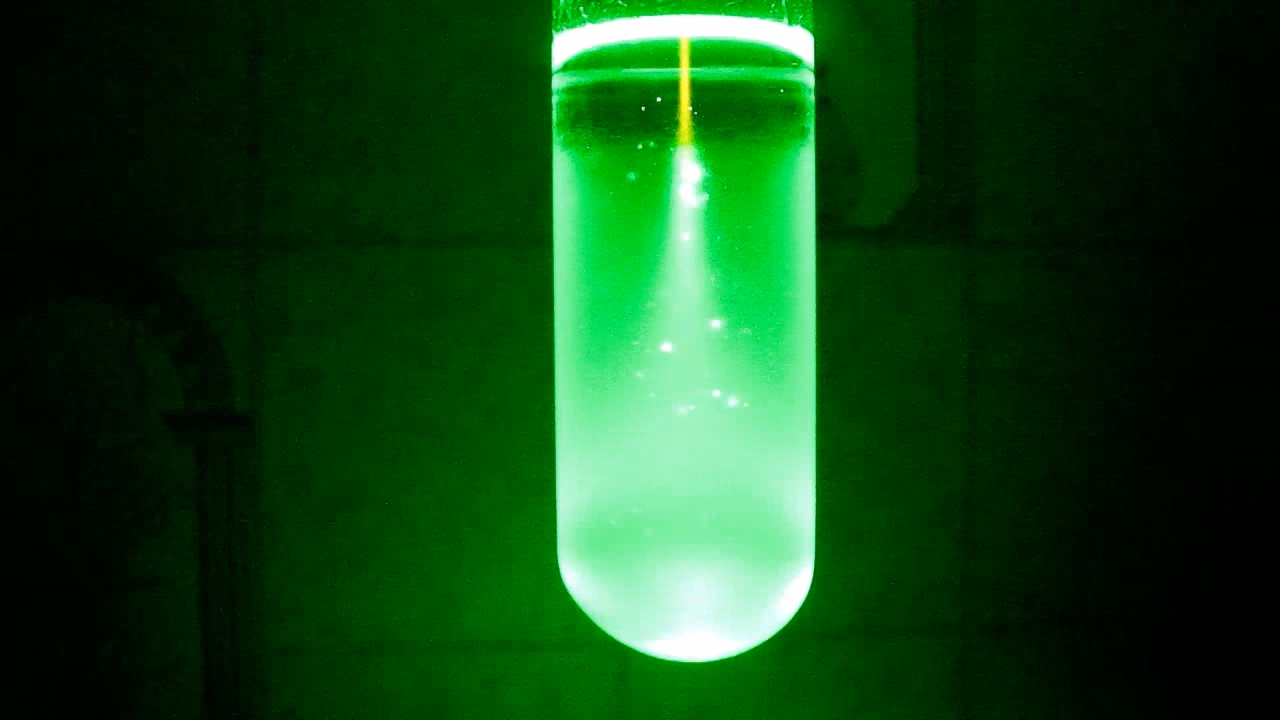
|
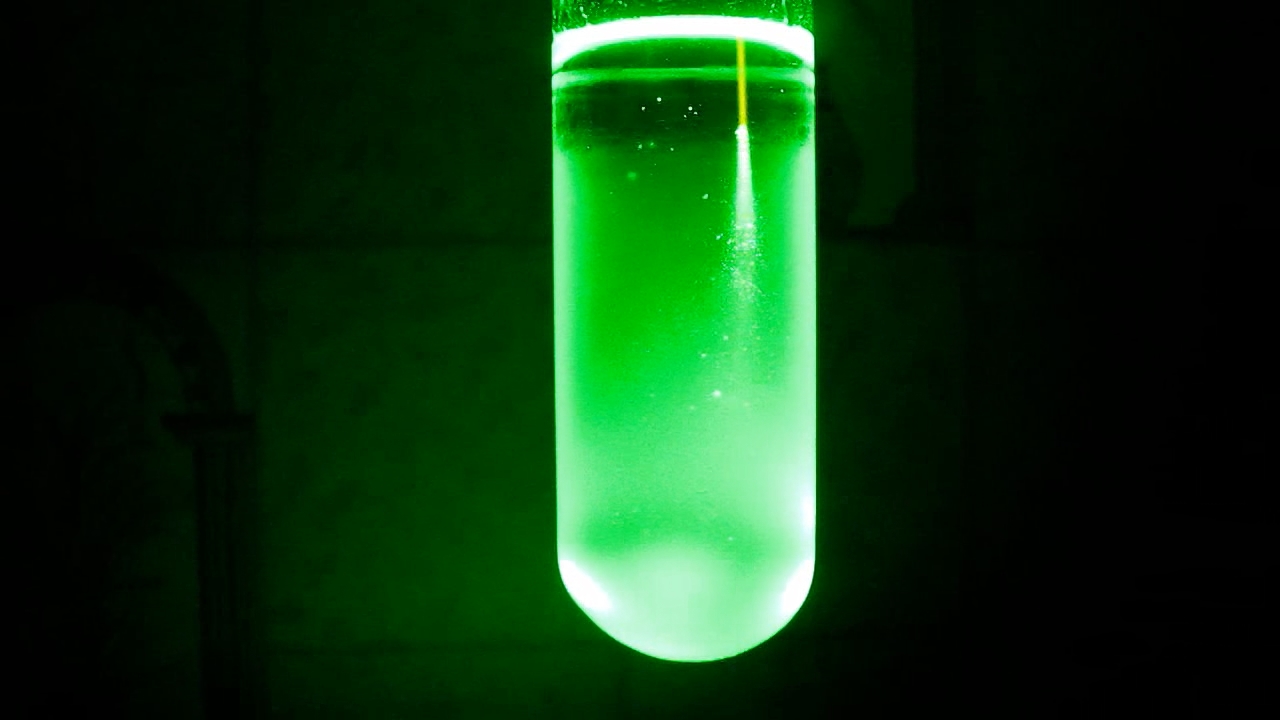
|

|

|

|
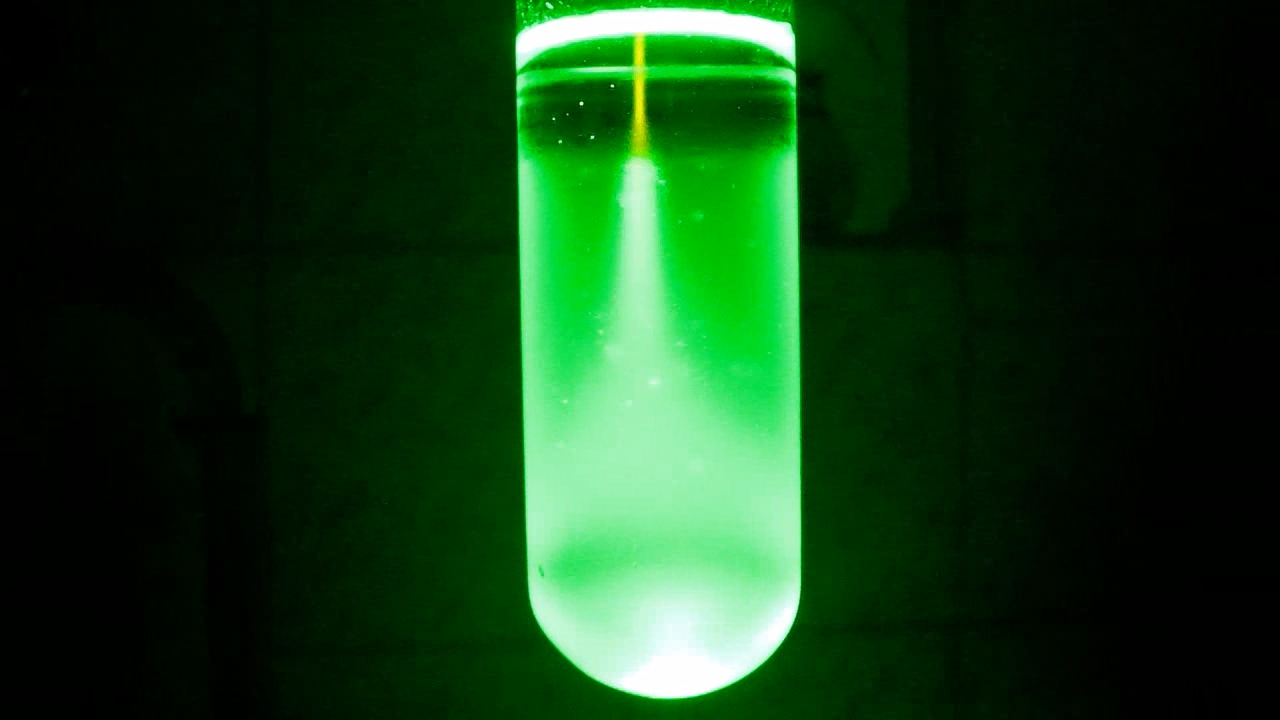
|
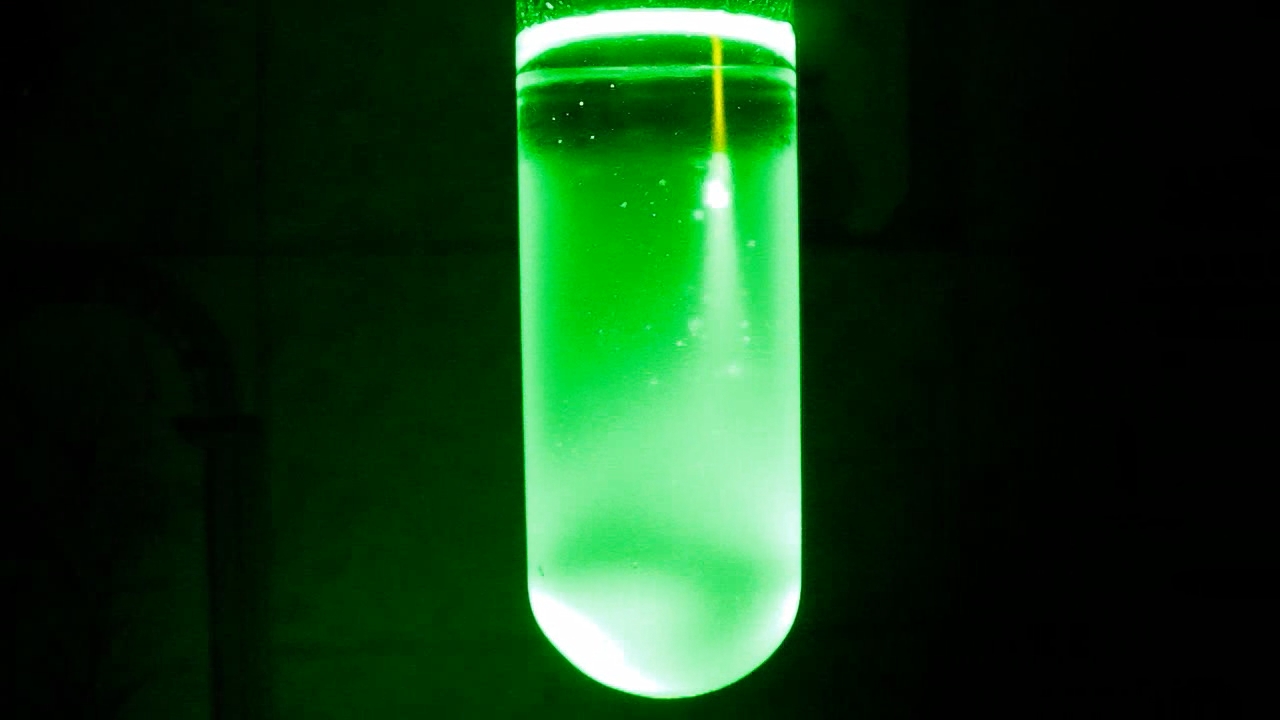
|
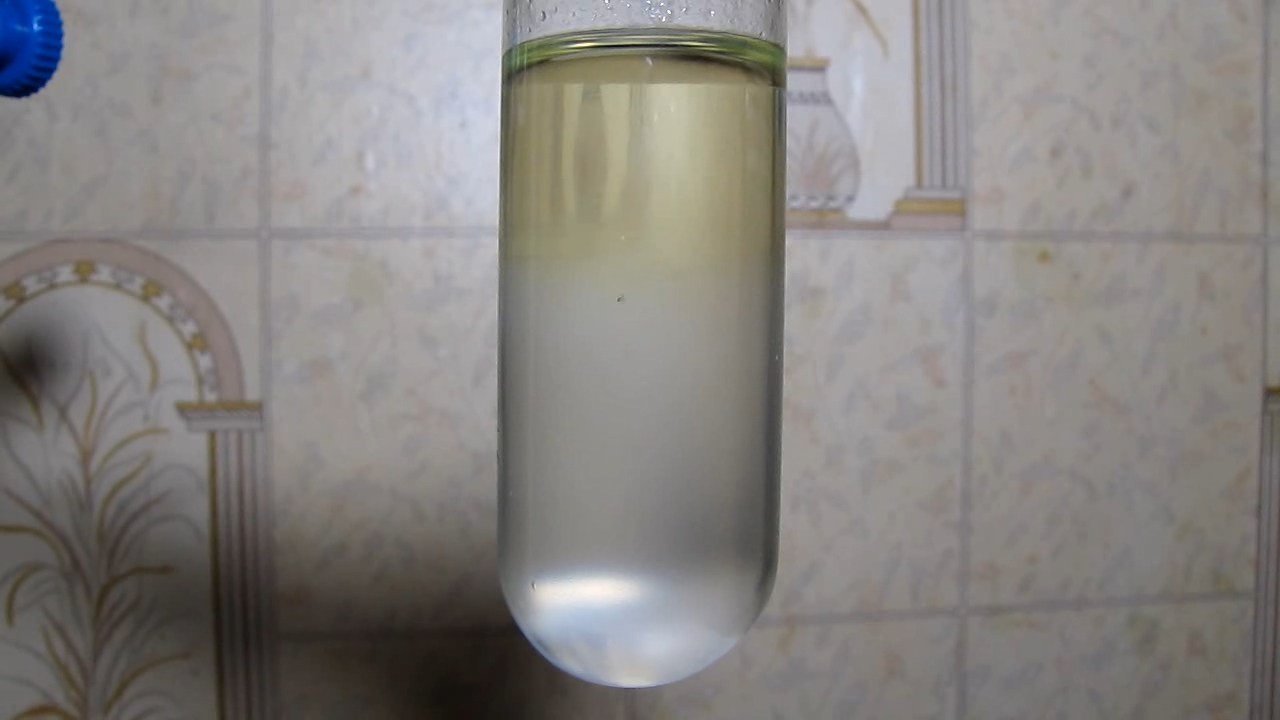
|
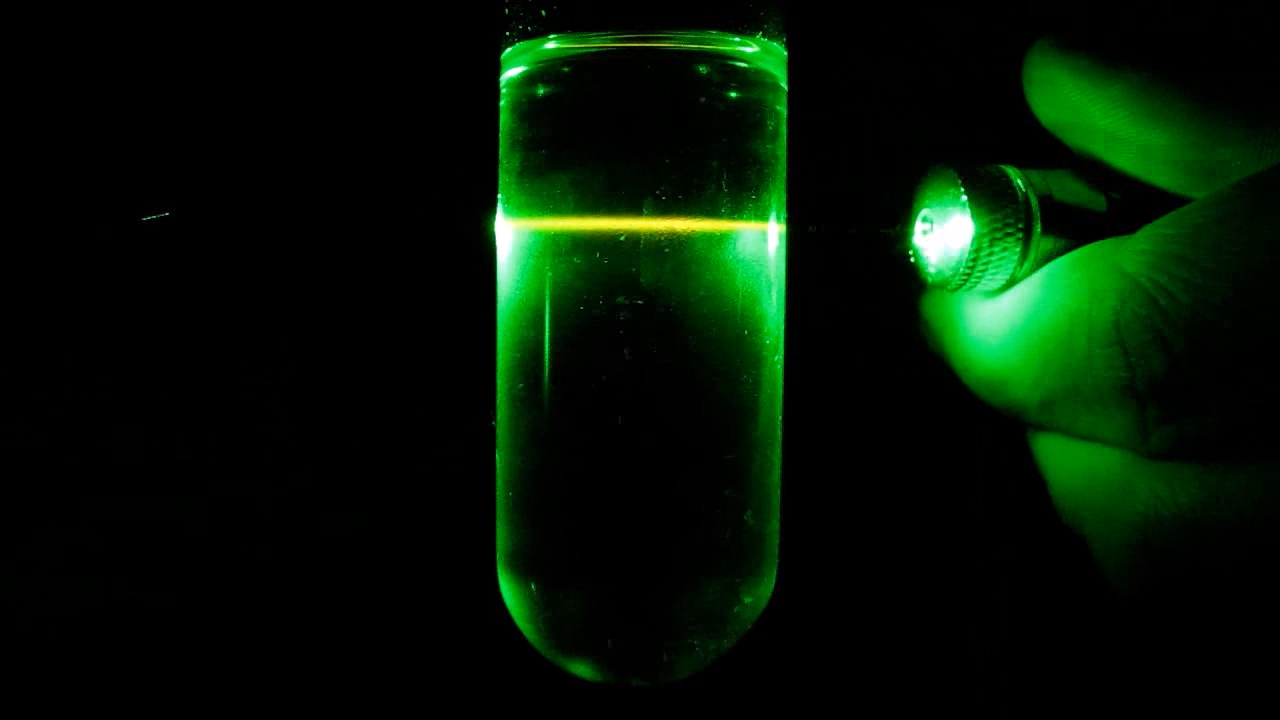
|

|

|

|
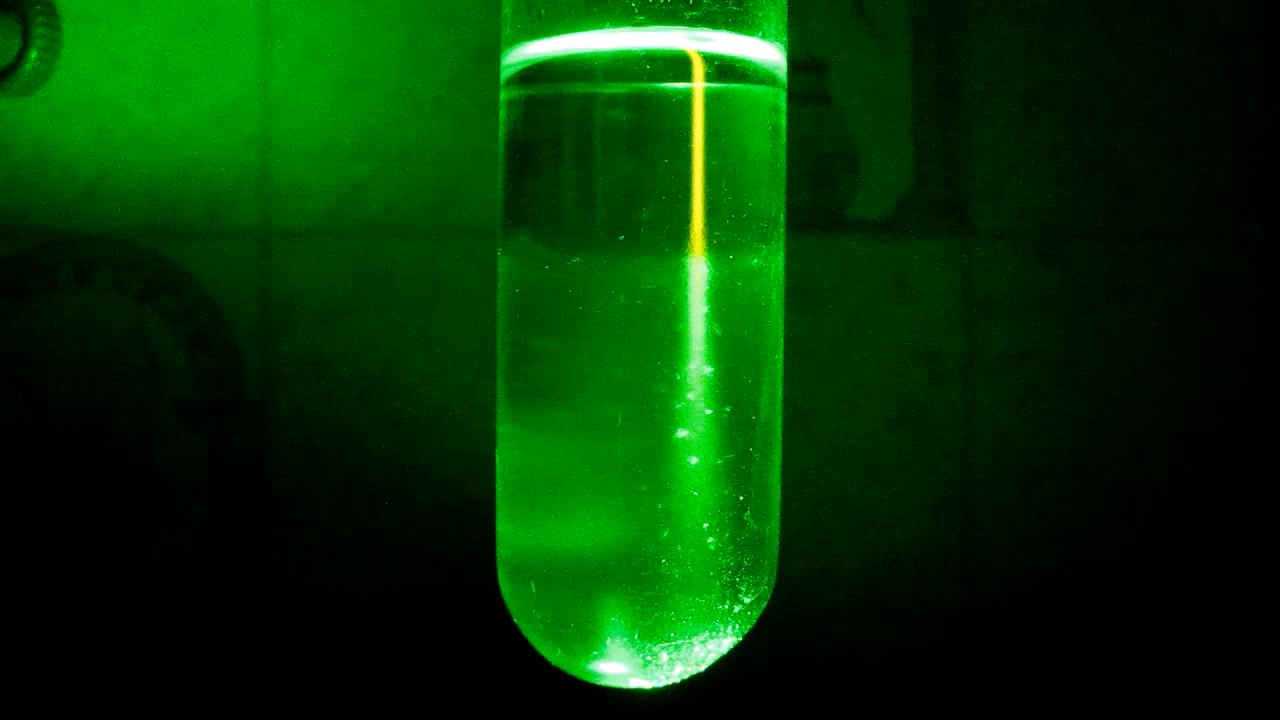
|

|
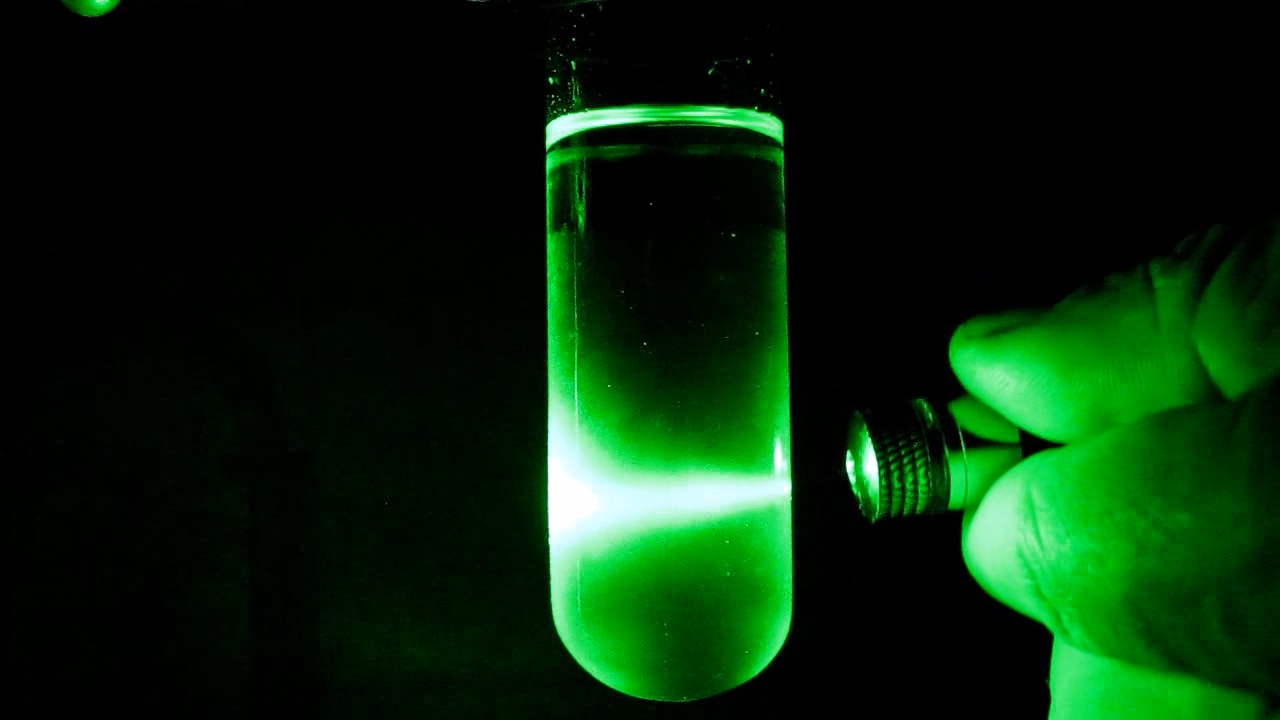
|
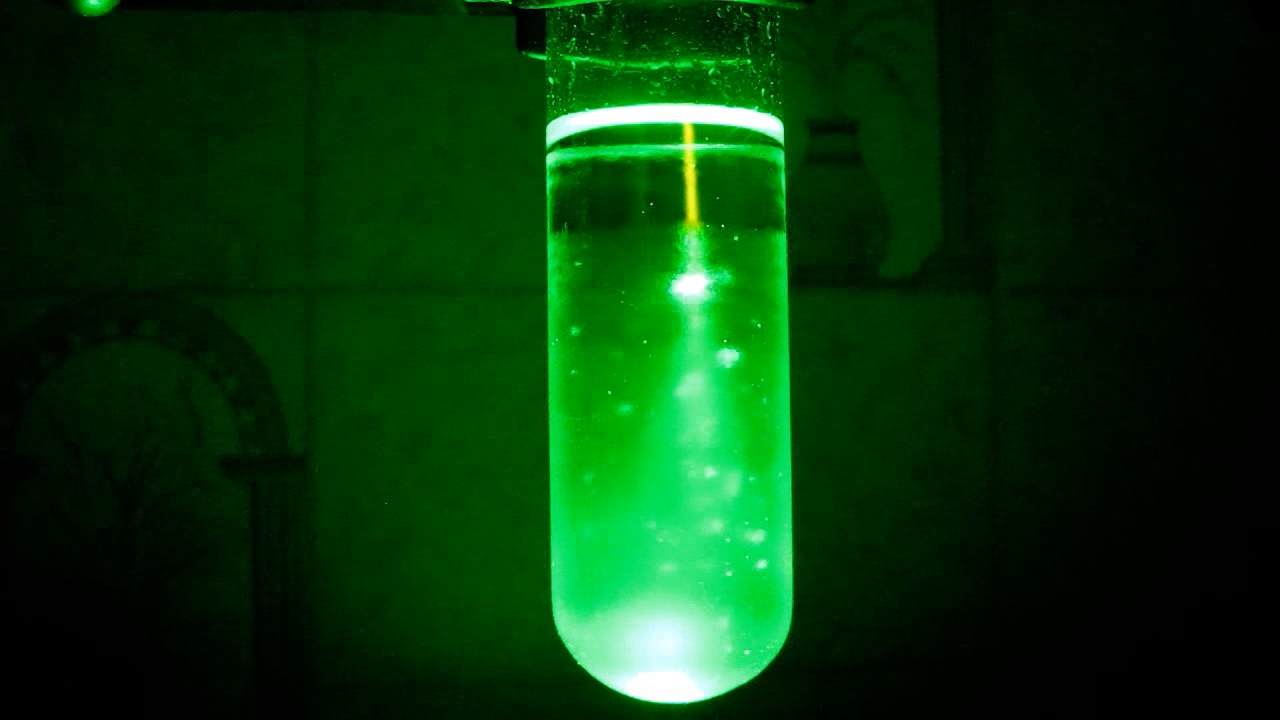
|
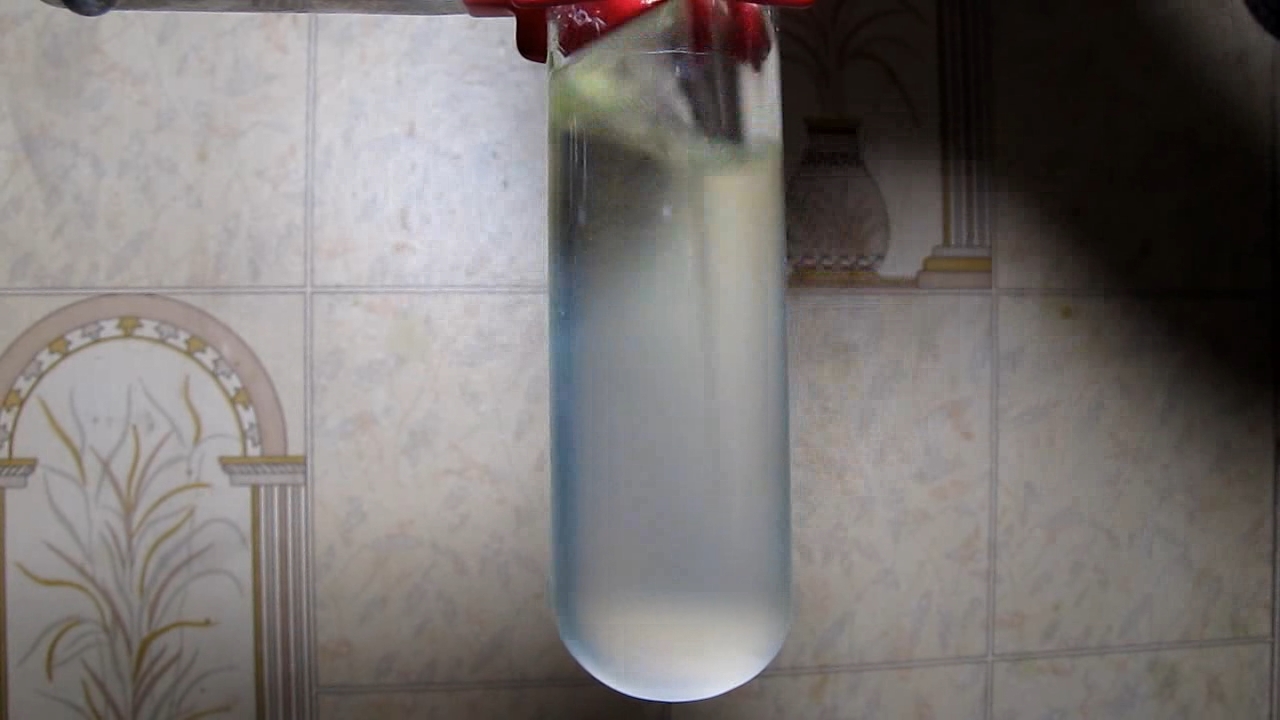
|

|
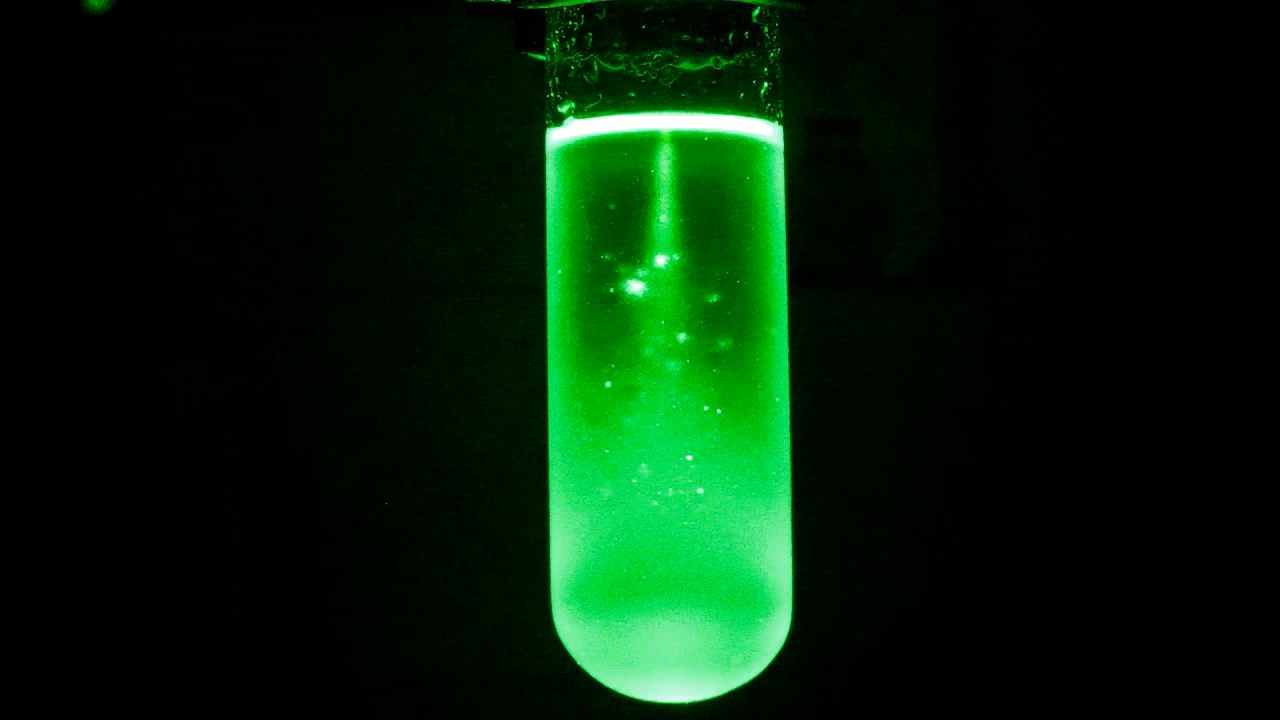
|
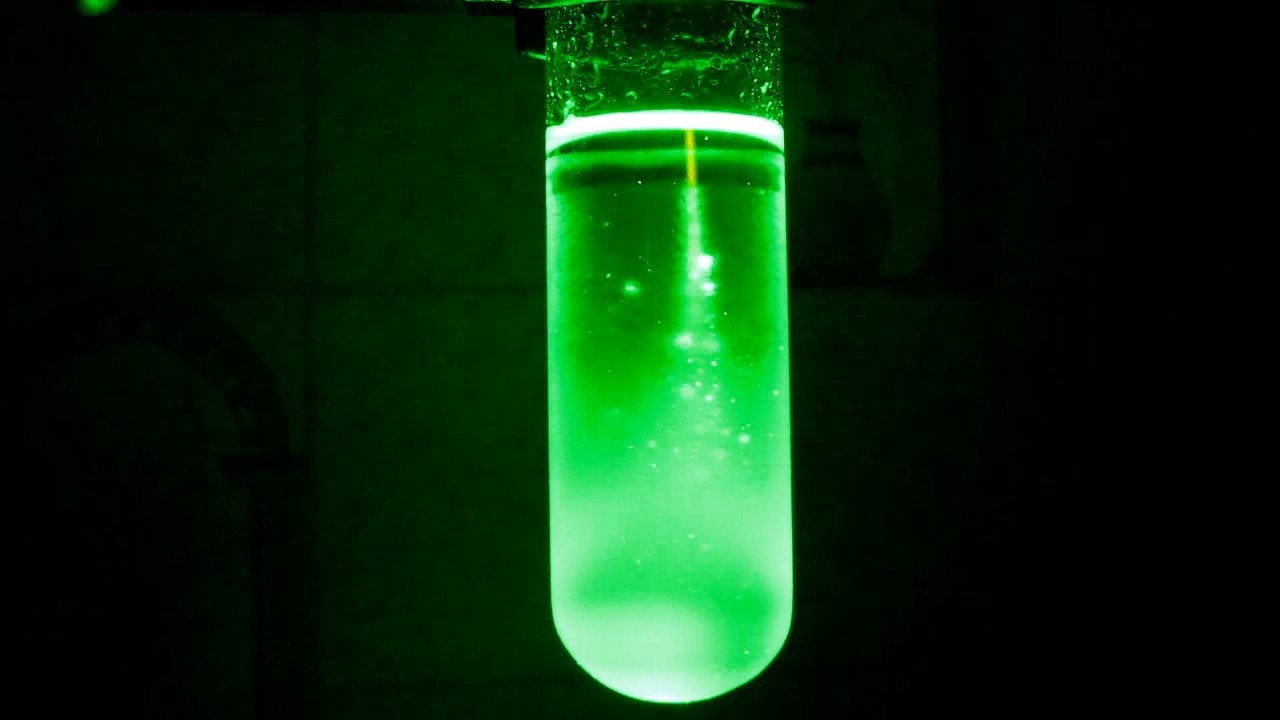
|
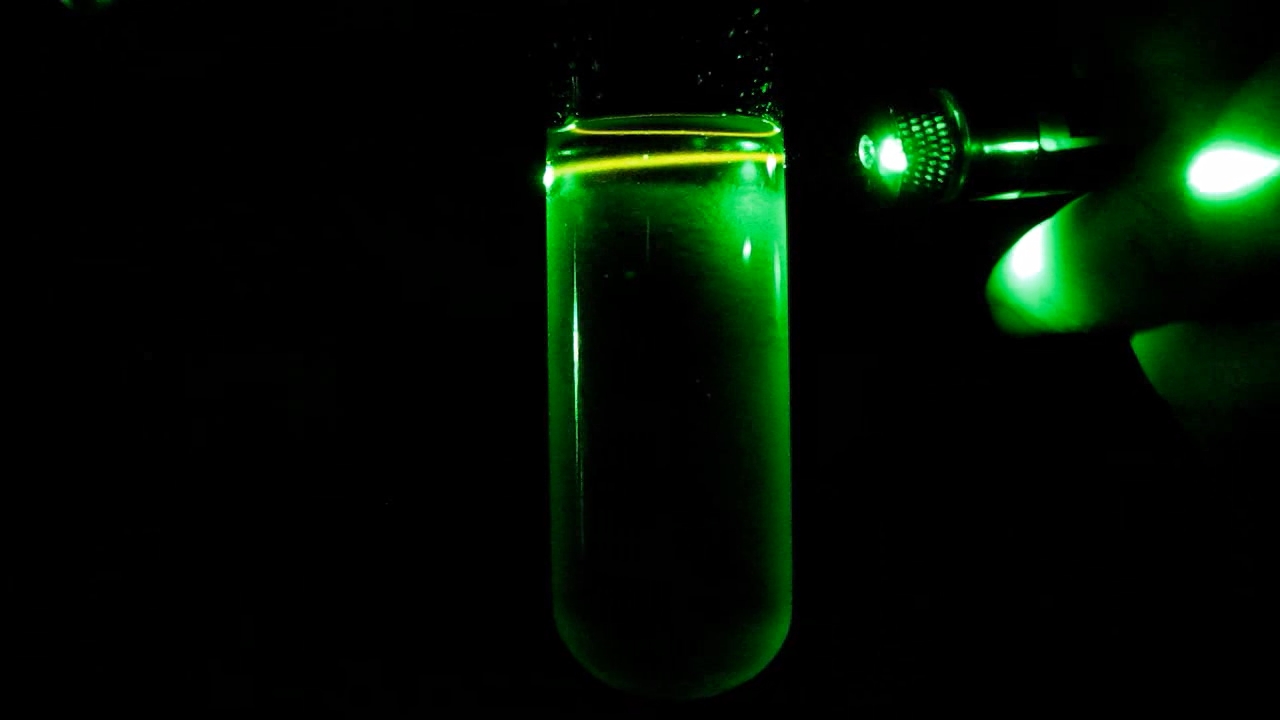
|
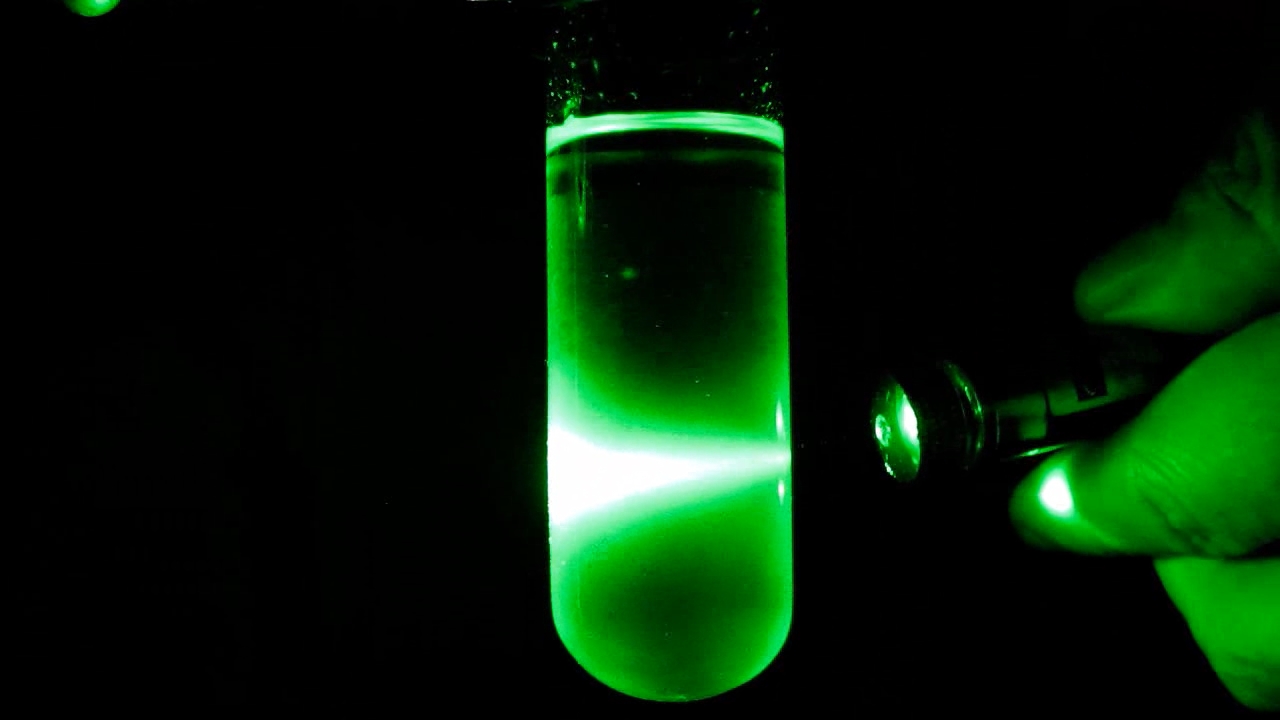
|
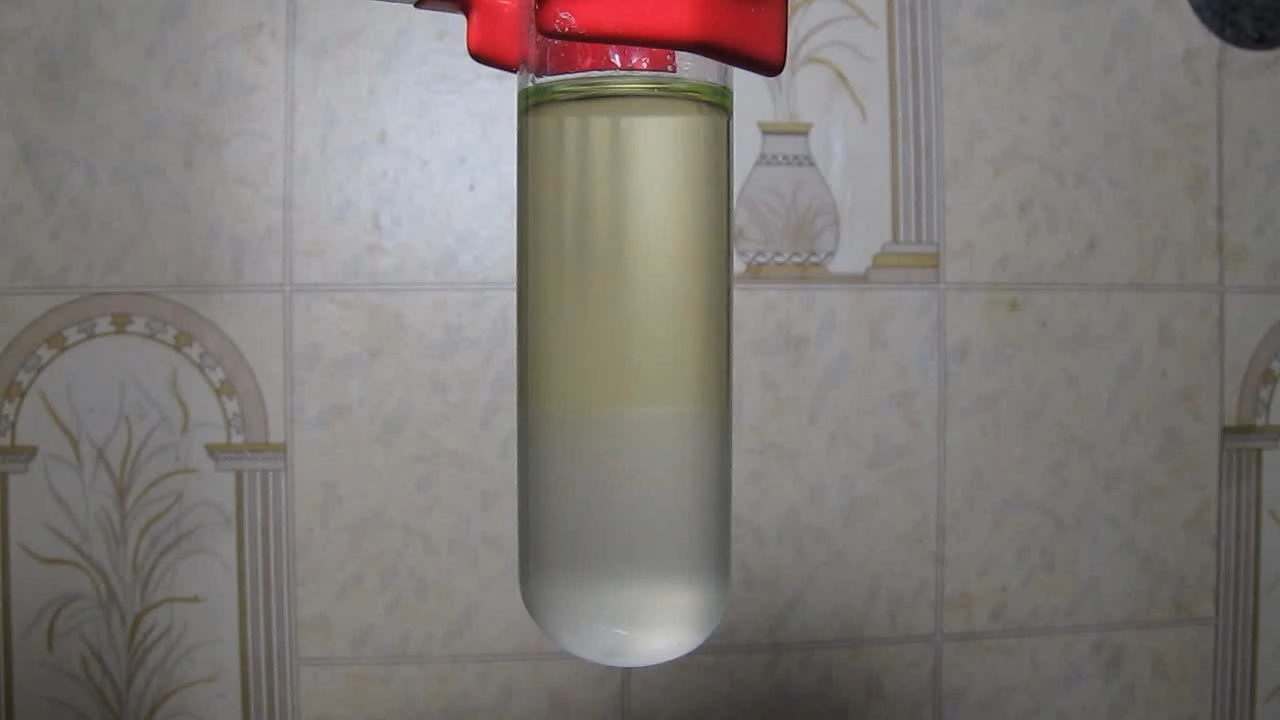
|
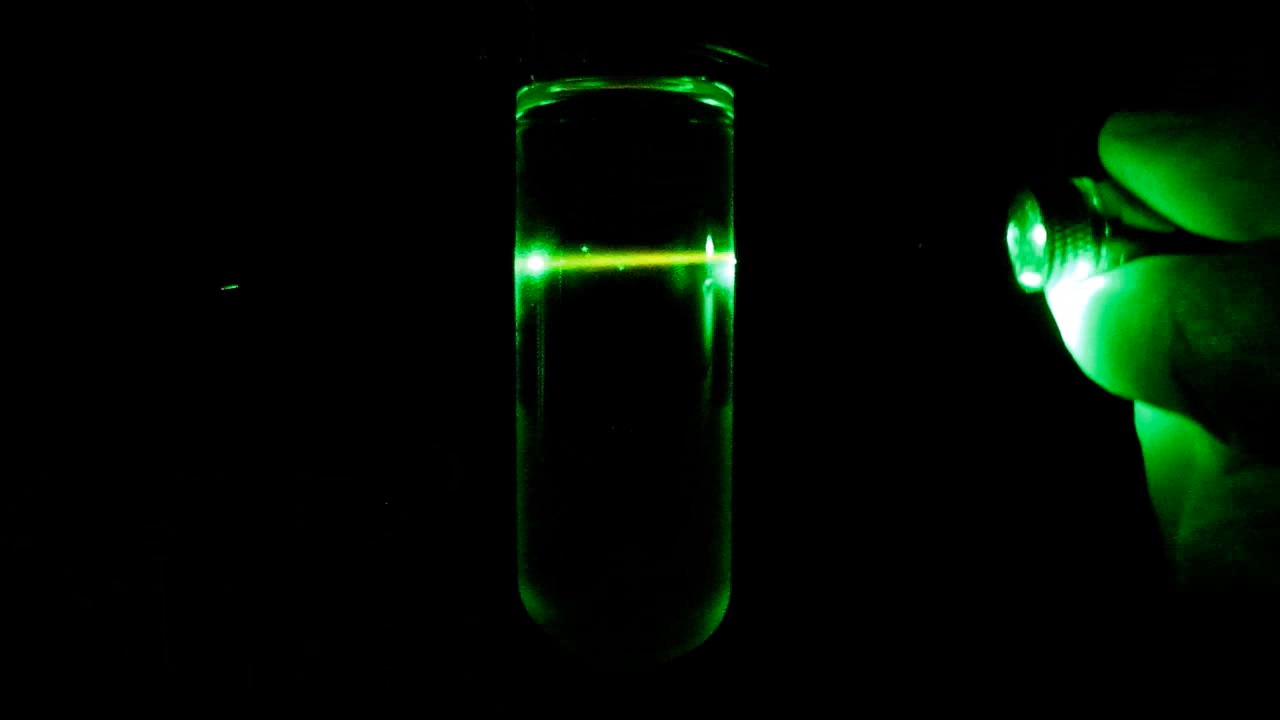
|
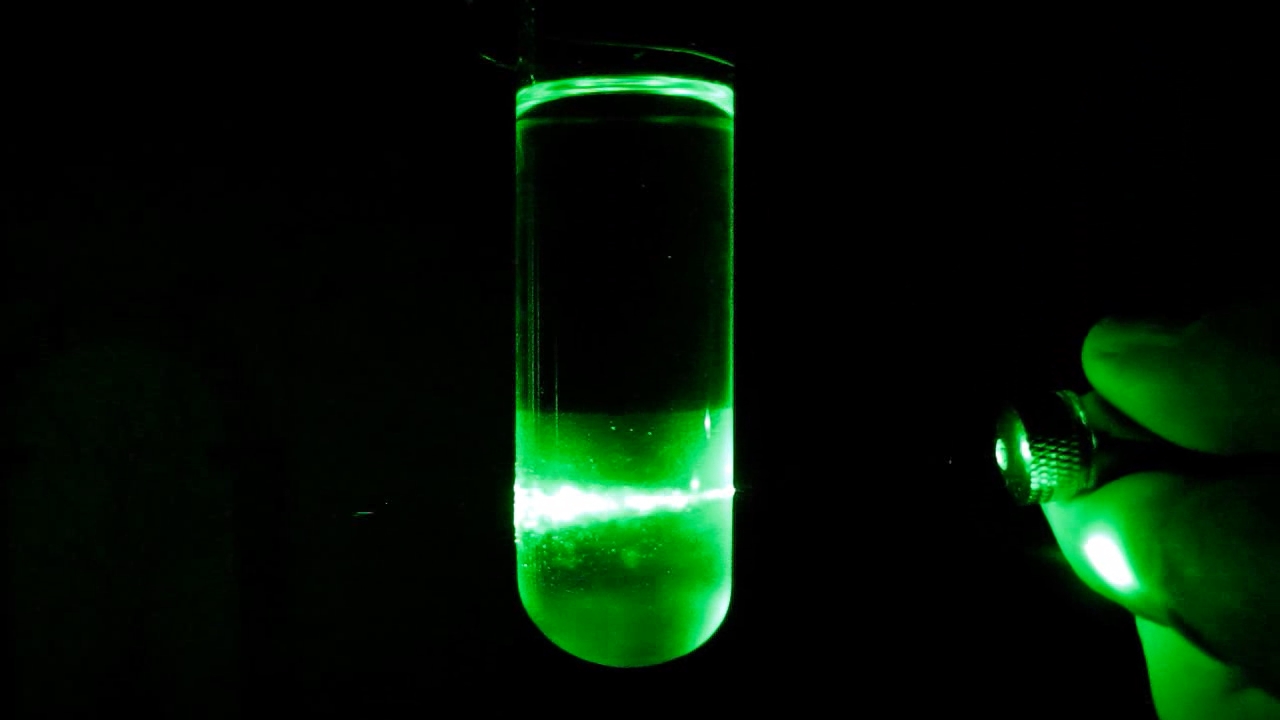
|

|

|

|
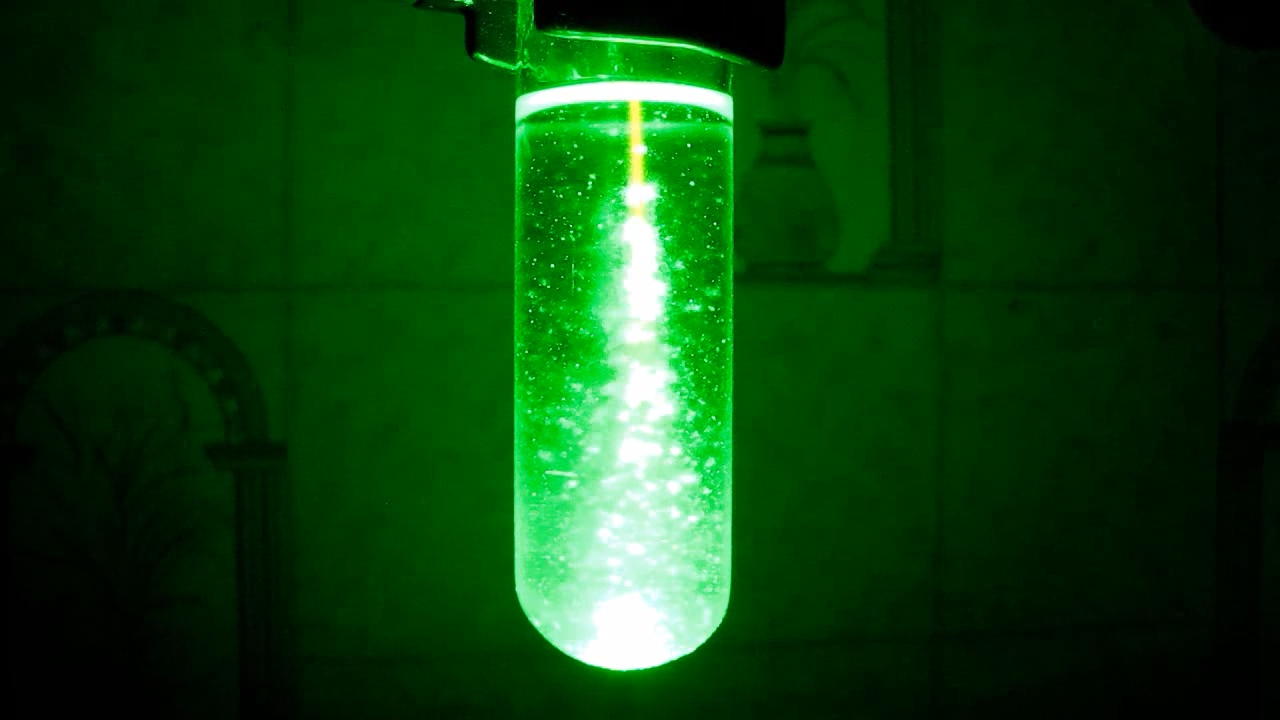
|

|

|

|
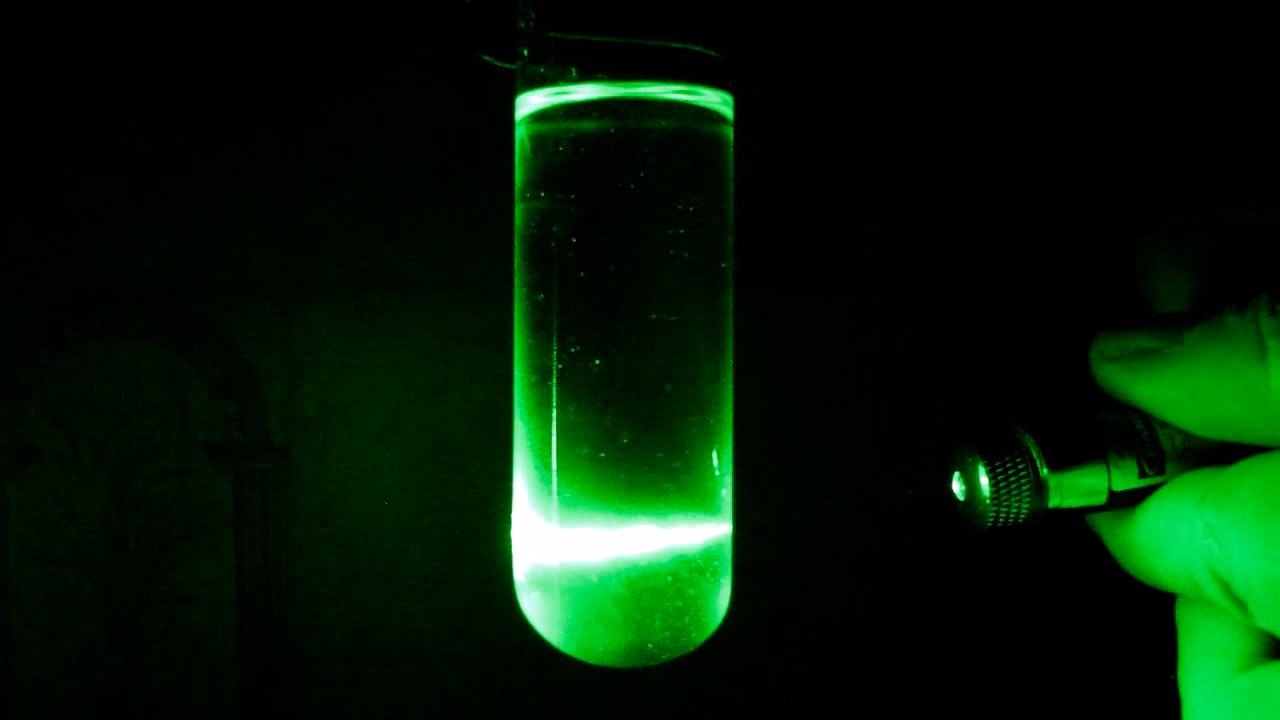
|
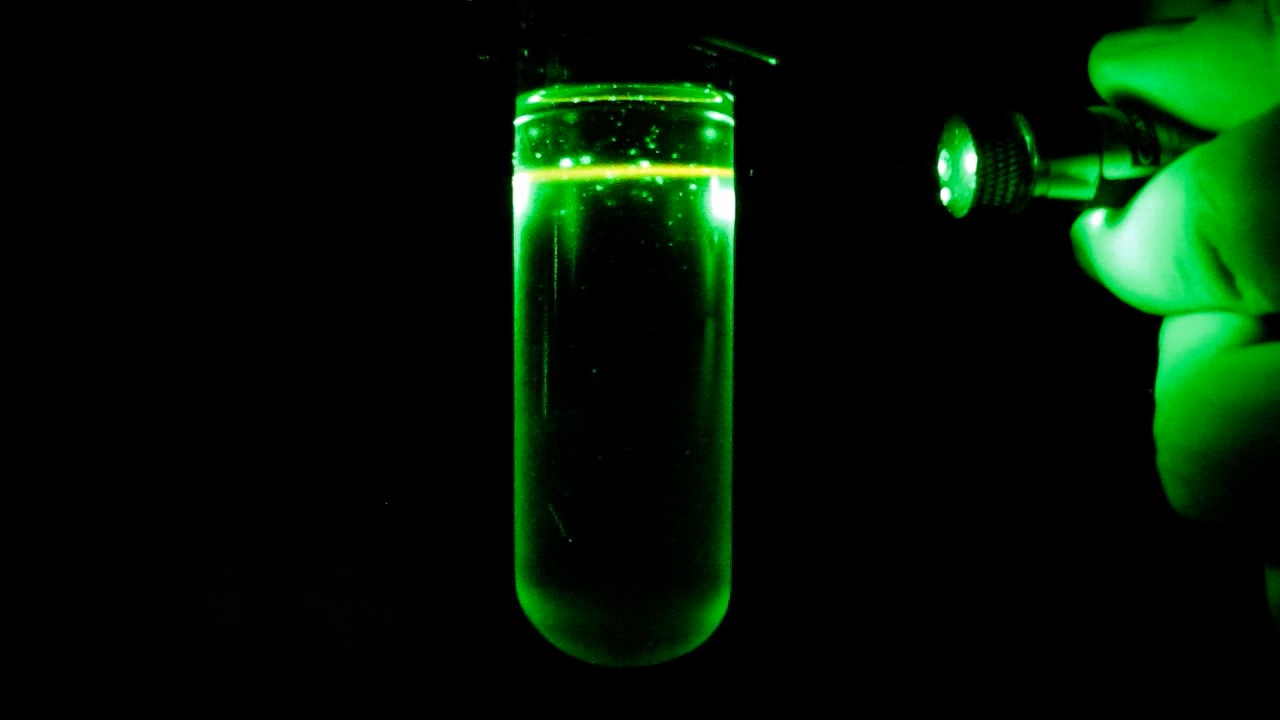
|

|
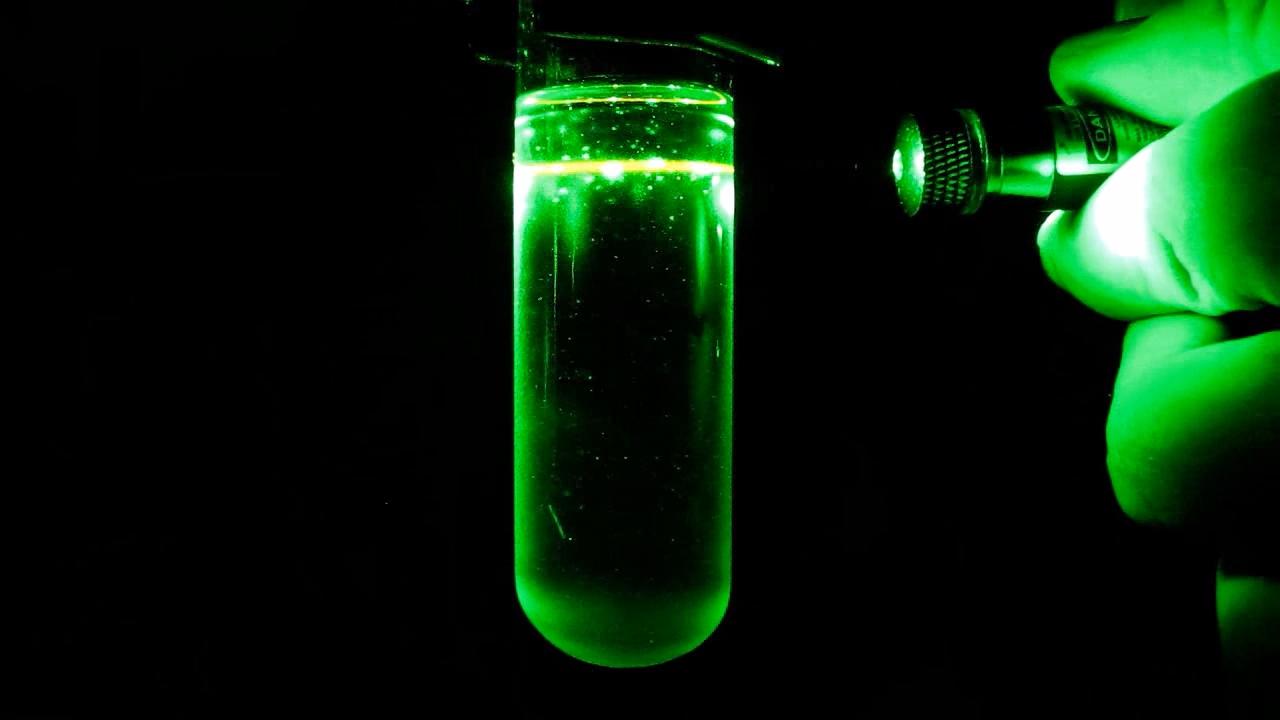
|

|

|
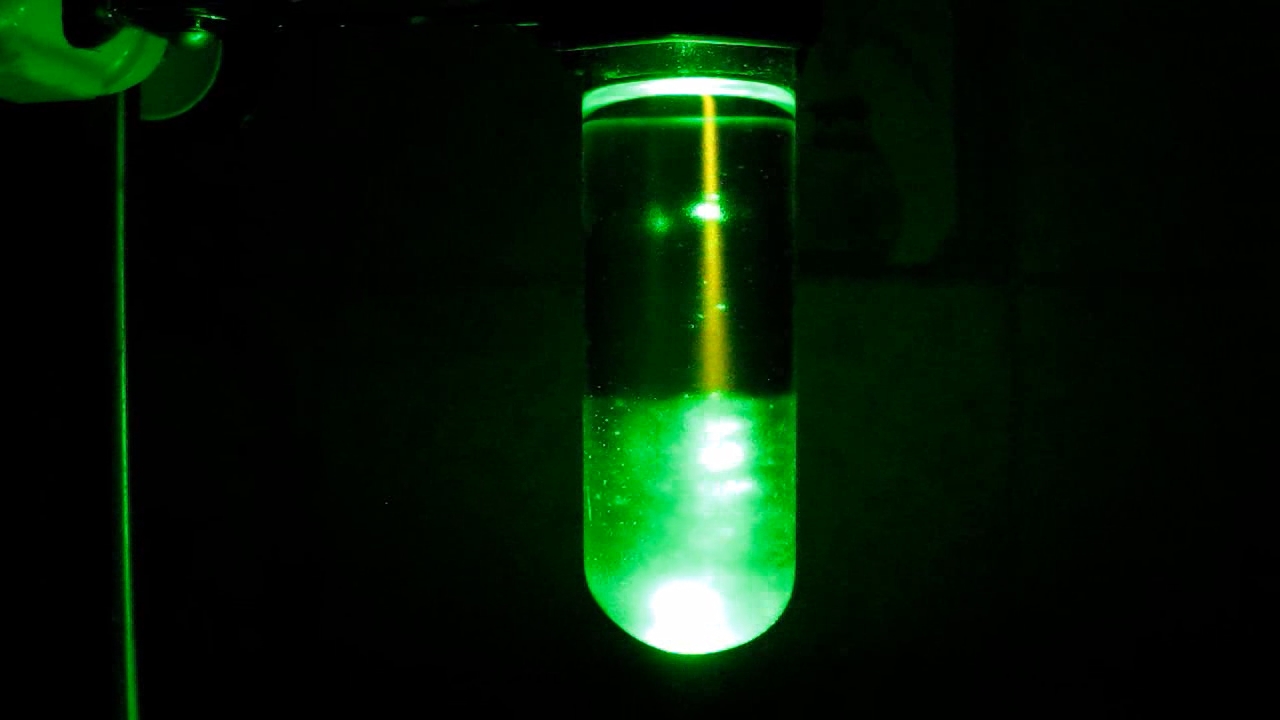
|
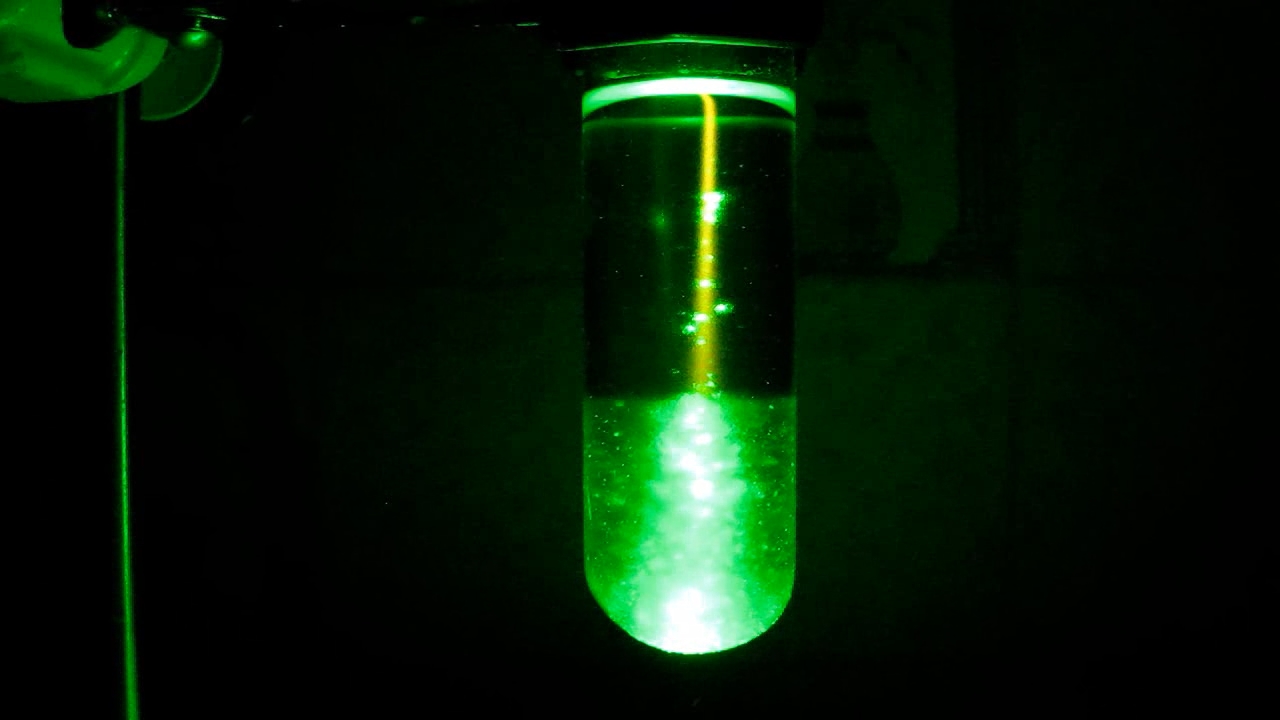
|
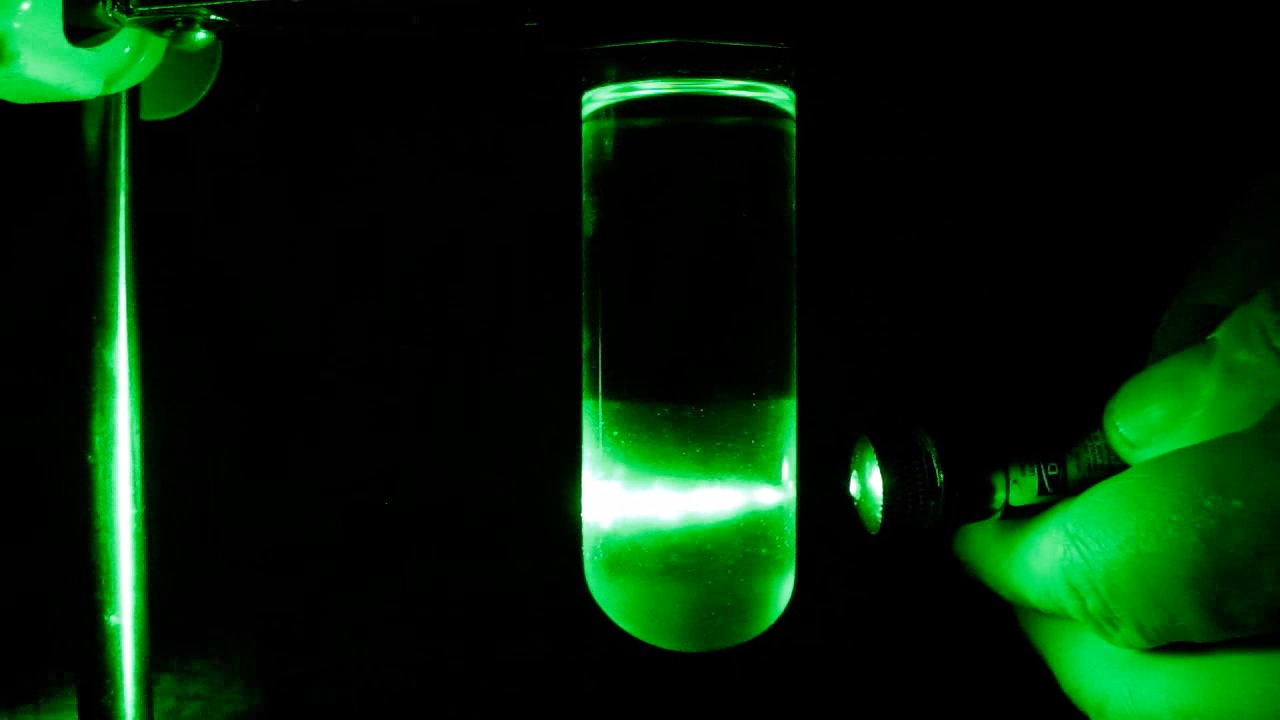
|
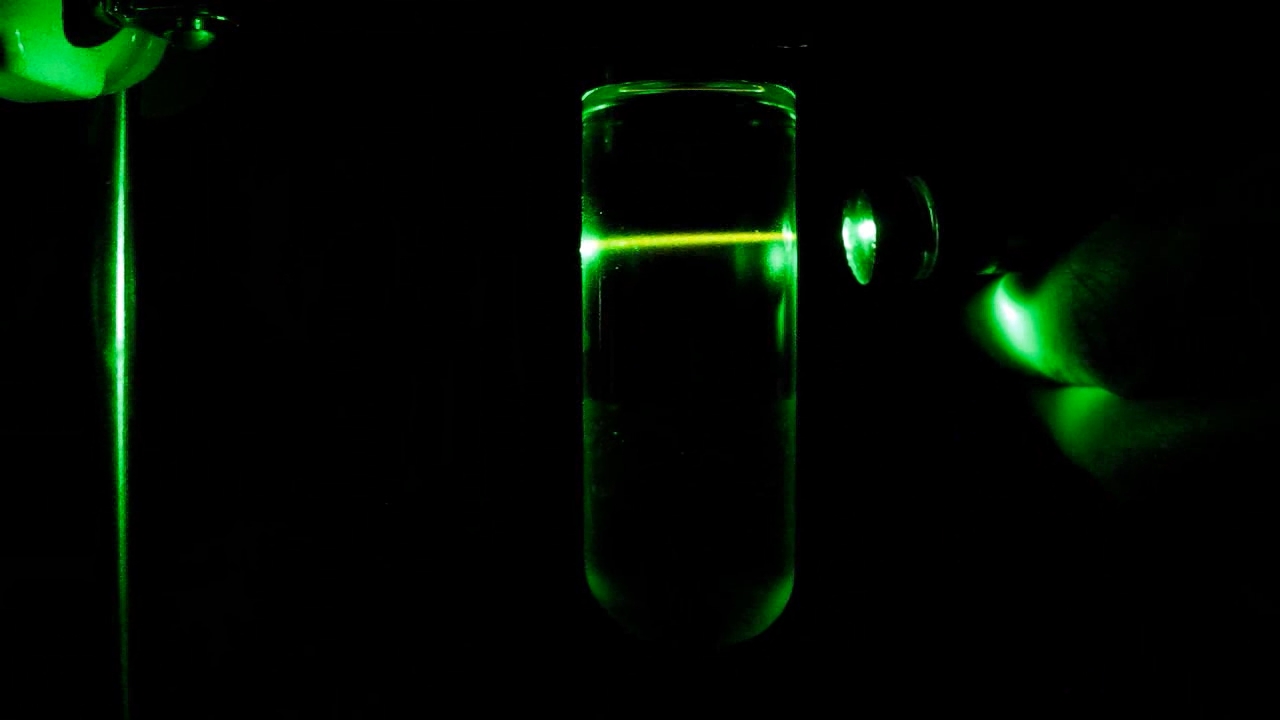
|
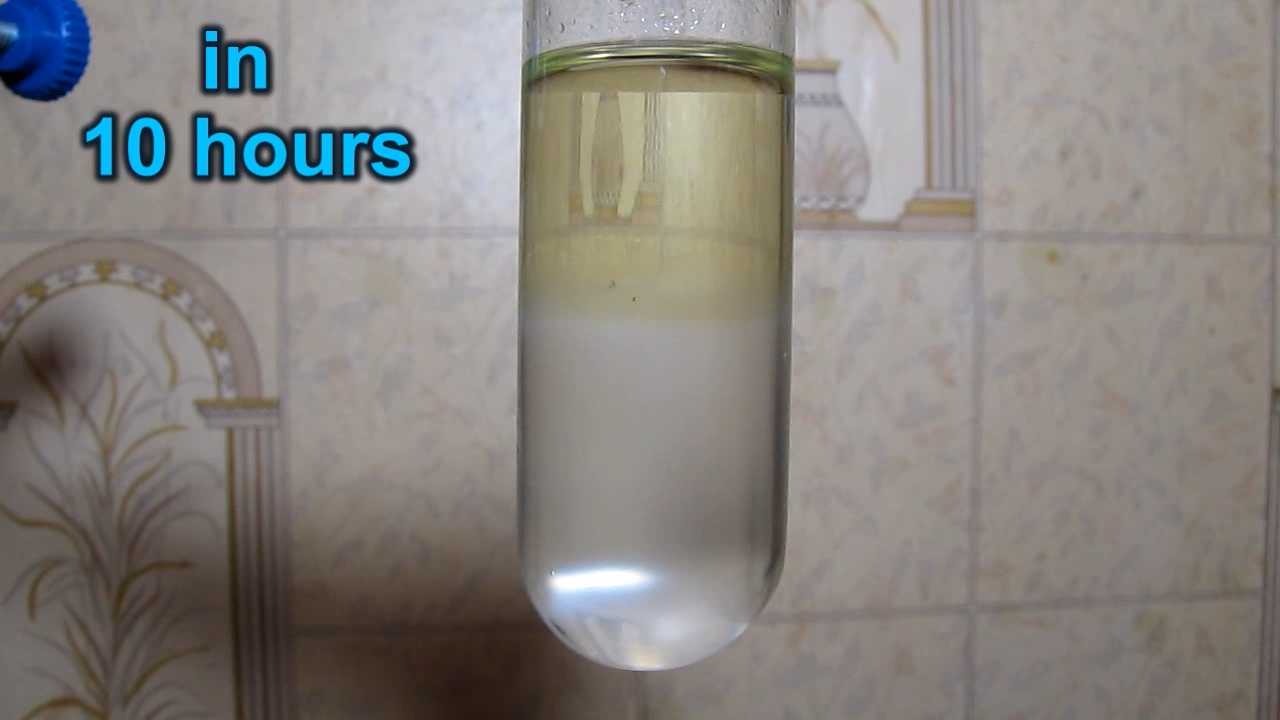
|
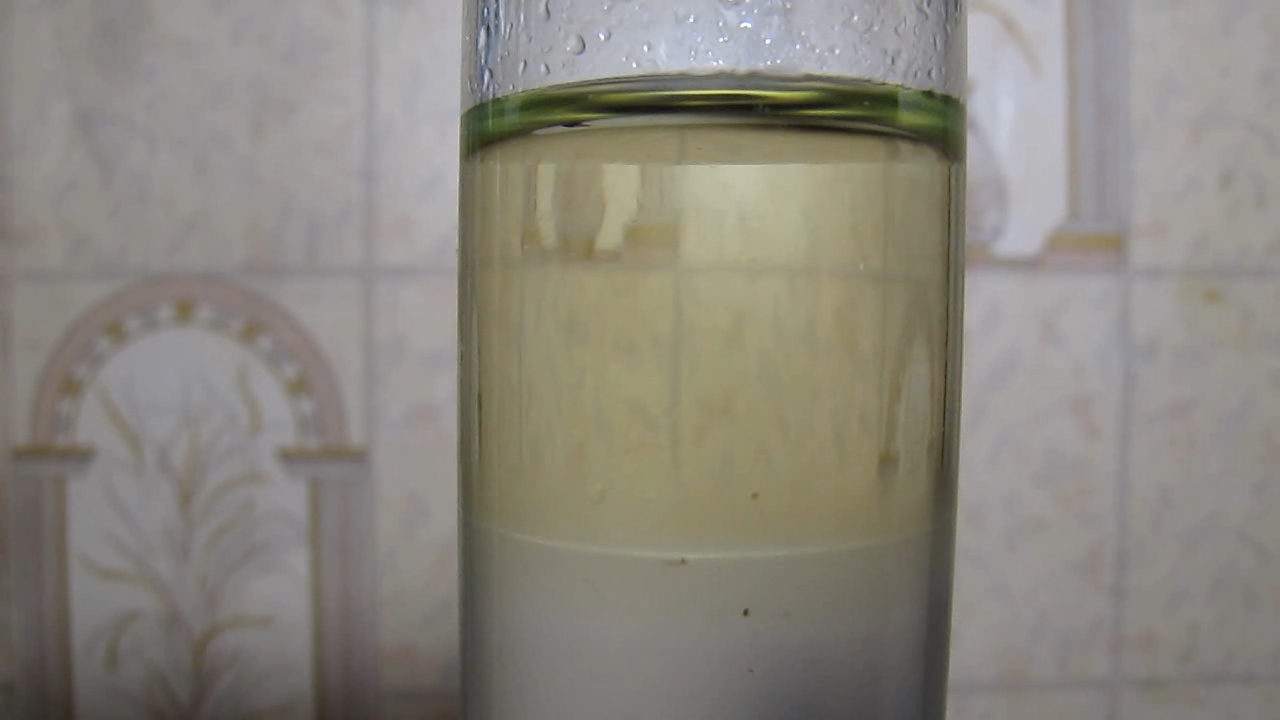
|
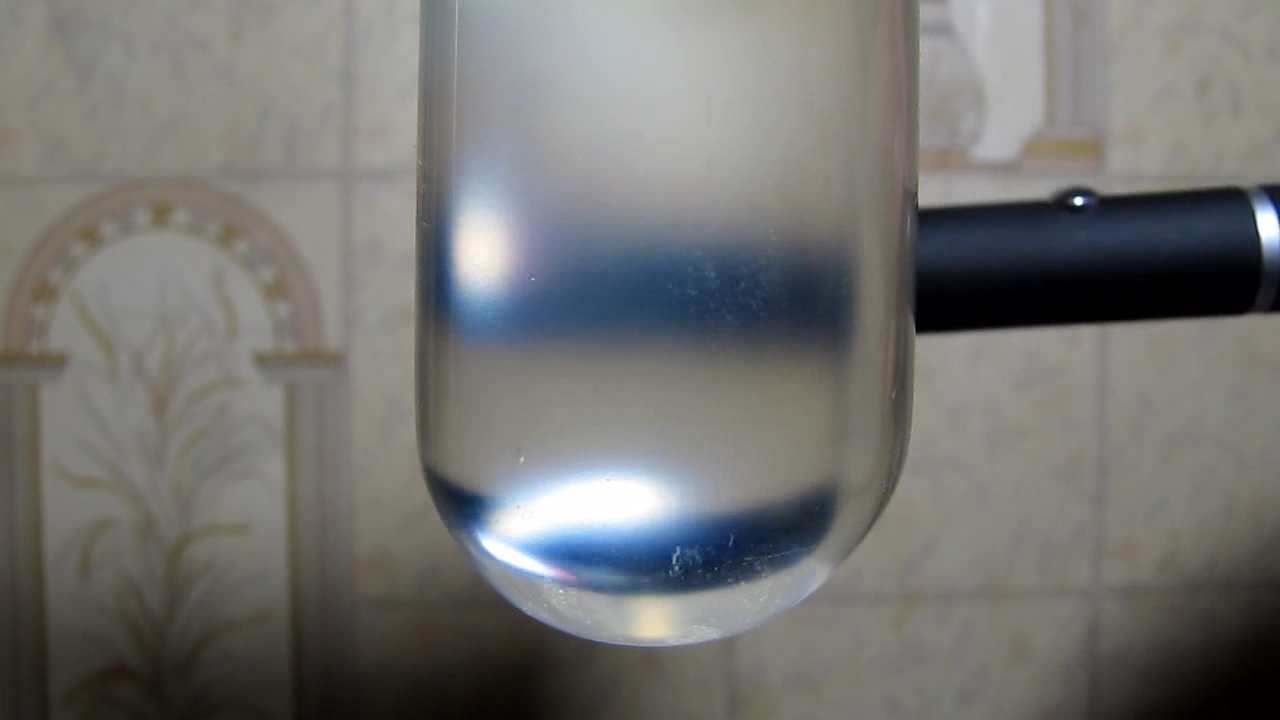
|
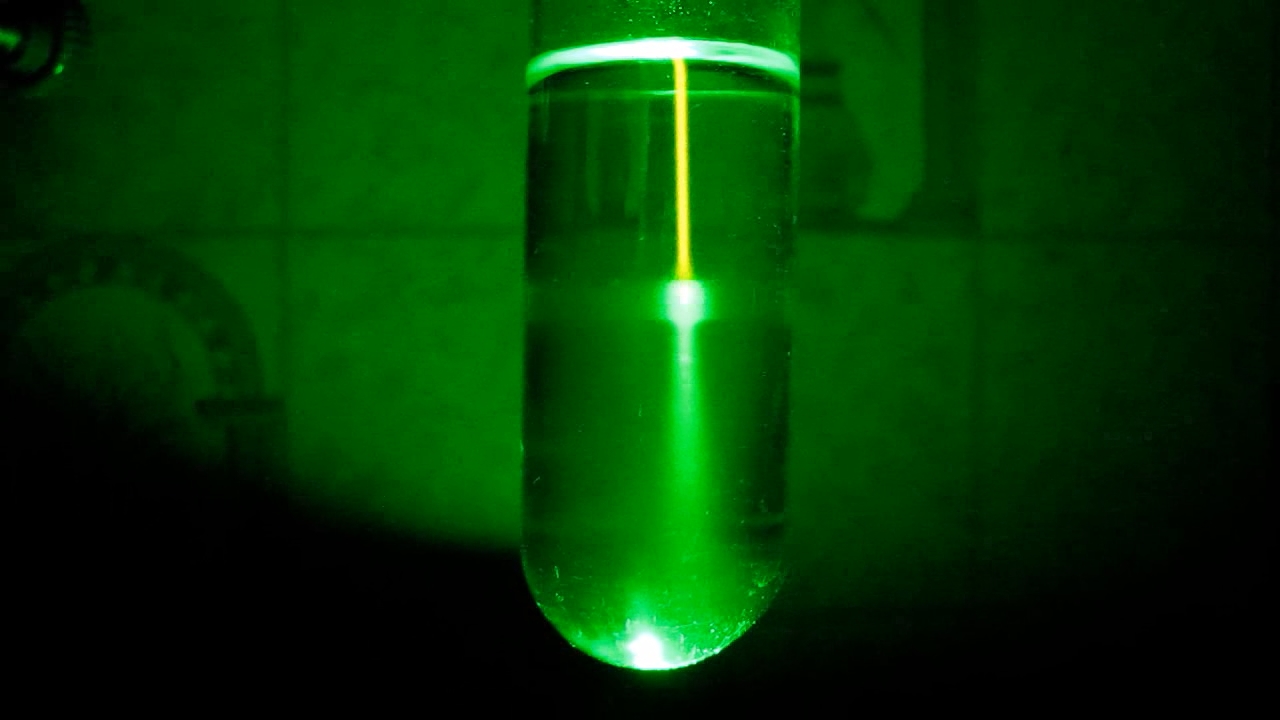
|
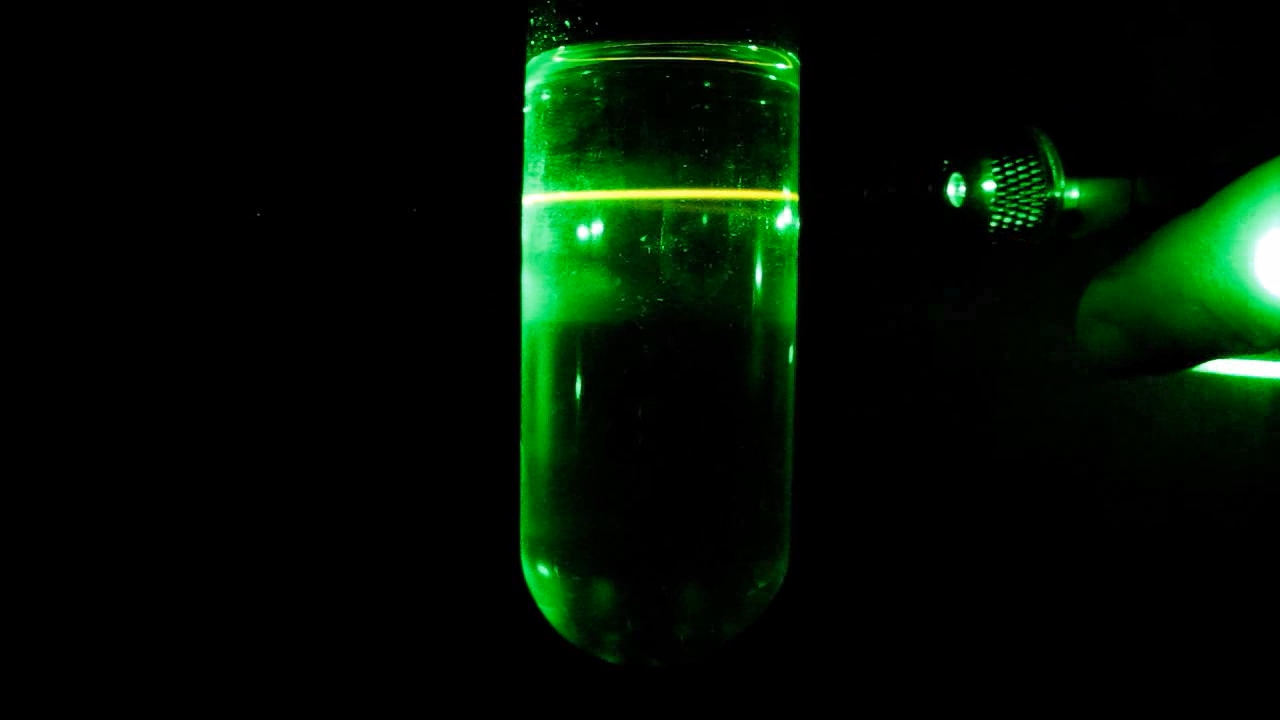
|

|

in 24 hours |

|
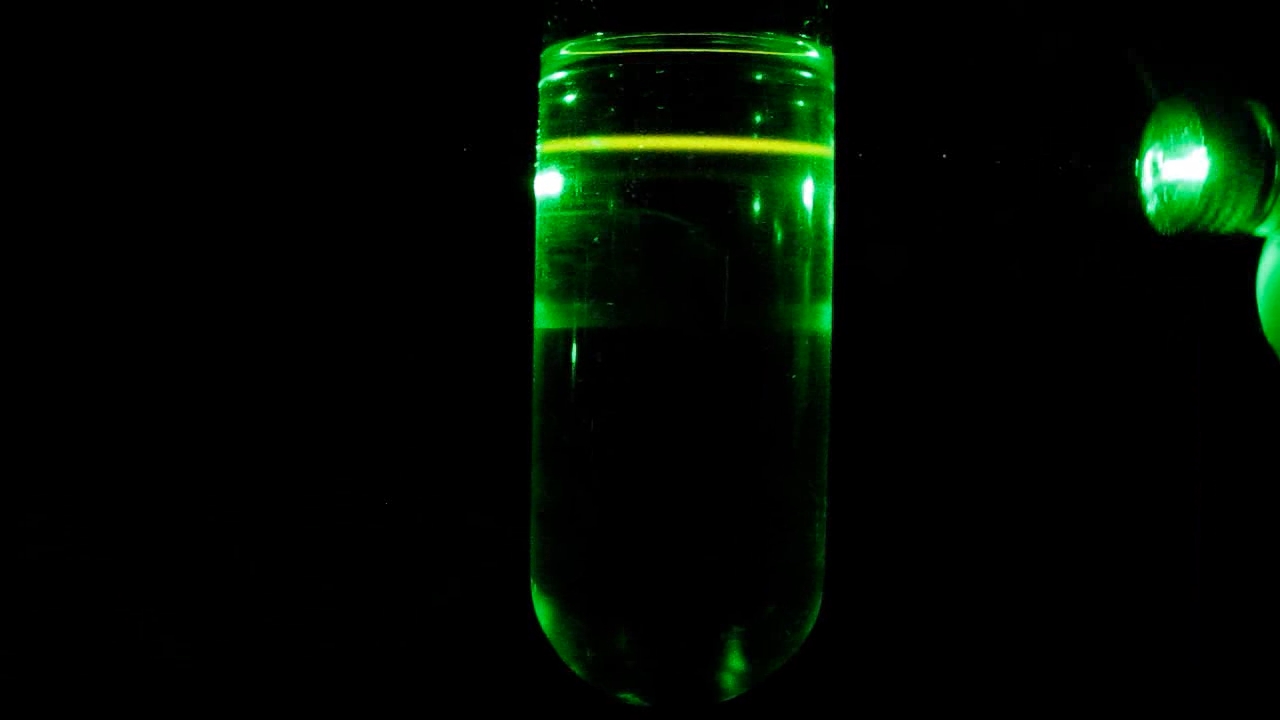
|

|
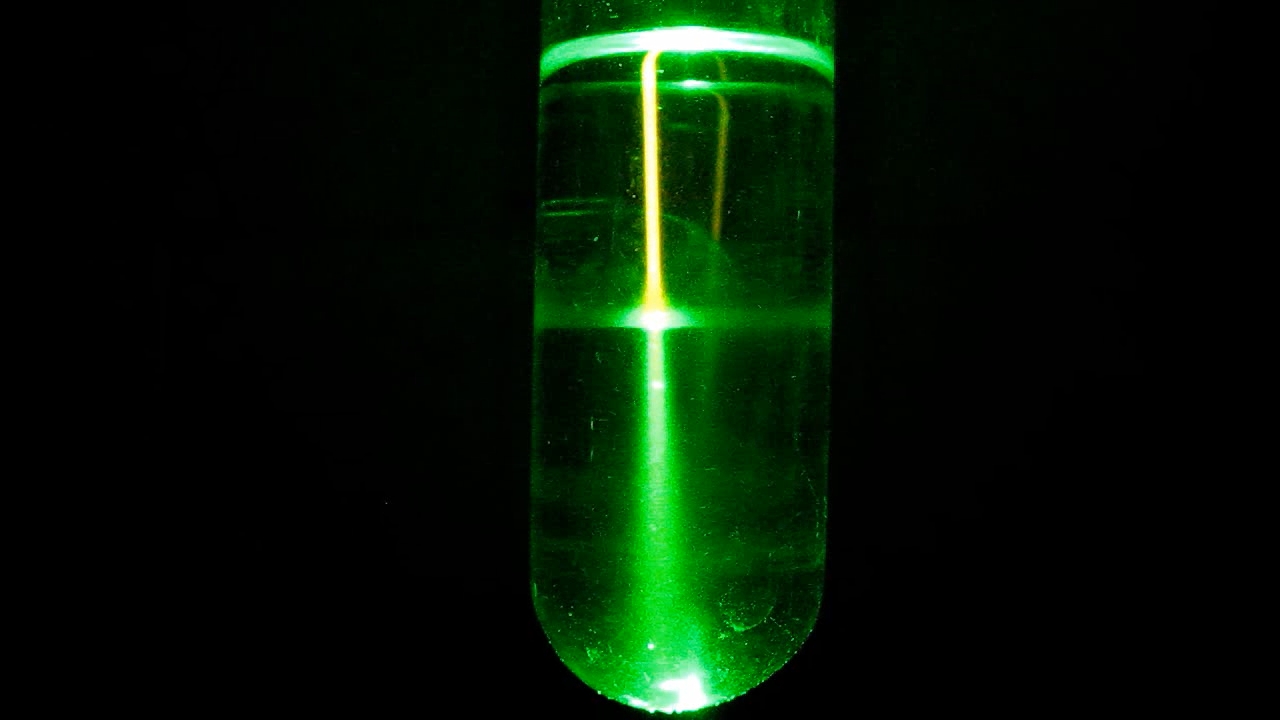
|
|
Комментарии
К1
Про вязкость эмульсии известно на примере майонеза.Кстати, в студенчестве, майонез тогда был дефицитом. Помню, оставил баночку в холодной кладовке. Майонез замёрз, а после оттаивания расслоился. |